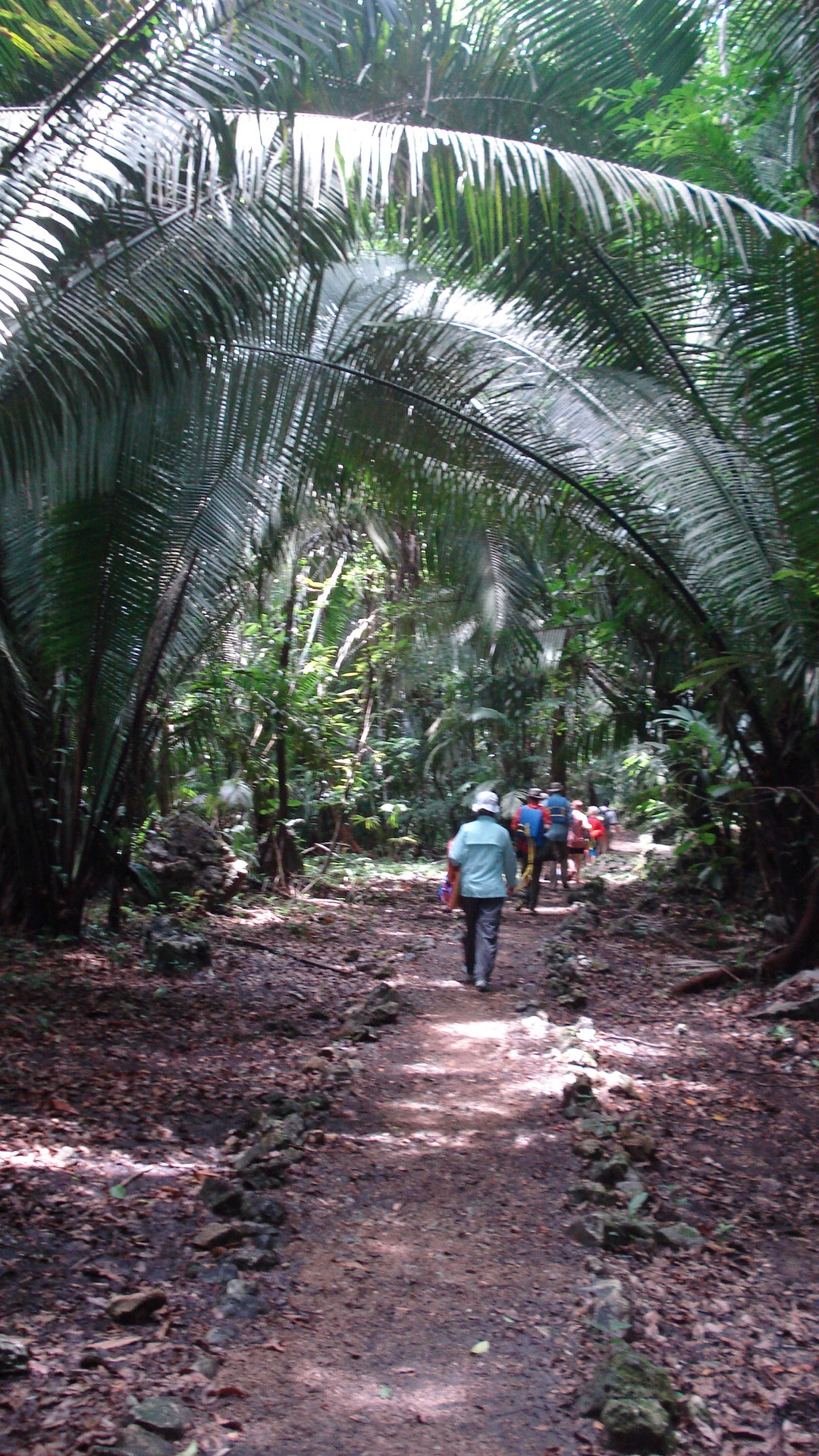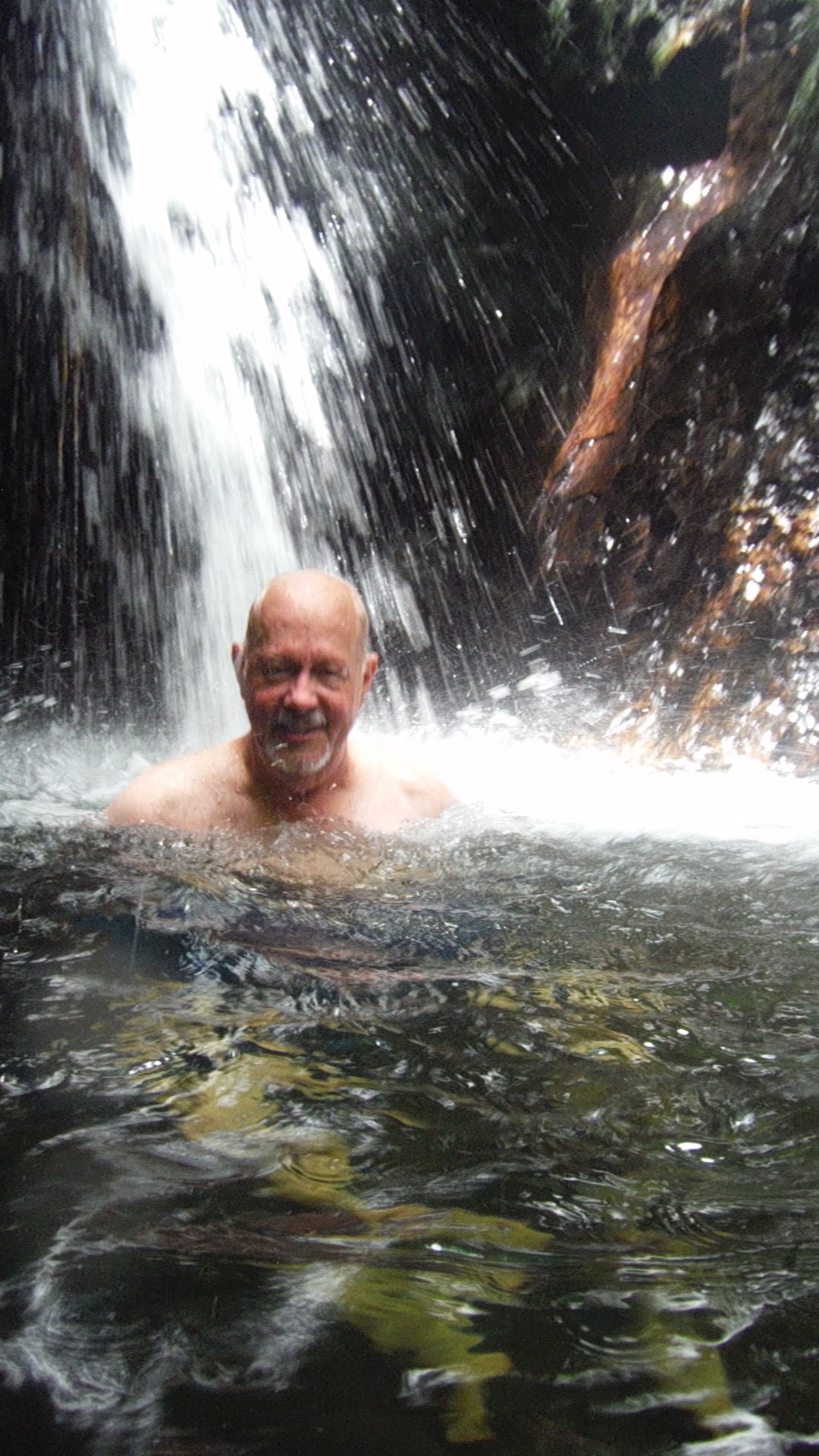Our Trip to Belize
August, 2014
We are not a sun and sand family. Beth and Ethan are particularly fair skinned and burn easily, and, besides, Beth once had melanoma, and, though she beat it, we take sun protection seriously. As for me, about three minutes lying in the sun, especially if on the sand, and I want to scream. We tend to like vacations to the mountains or to neat towns and cities—Paris, Dublin, San Francisco—you get the picture. So John, Ethan and I we were taken aback with the most recent vacation plan that popped out of Beth’s creative, fertile, if somewhat whacky, mind—a family vacation to Belize in Central America. We didn’t even know where it was. After all, when I was younger and learning world geography (yes, I had geography classes in school), Belize didn’t exist. I knew it as British Honduras and only recently learned that it gained its independence from Britain only in 1981 and changed its name to Belize. (It is still in the British Commonwealth, and they still speak English as one of their many languages.) But why would we go on vacation for beaches, sun, and sand? The answer is they also have snorkeling and jungles and Mayan ruins. But mostly we went for the animals, which made this a vacation our family could get excited about—especially John, who as a budding biologist with a special love of marine biology, saw this as a dream vacation.
After landing in Belize City on a flight from Miami, we transferred to a one-prop, puddle jumper to take us to Placencia, a small village on the southern coast. When I say puddle jumper here is what I mean. The pilot had to rearrange us in the plane to secure a proper balance for take off; instructions consisted of the pilot saying, “For safety reasons, if you see me go out this door, you had better be right behind me.” We made three stops in small villages to let someone on or off, the last stop being the small landing strip by the ocean for Placencia. The only road going from our resort and along the peninsula to the small village crossed the runway and had a sign that read, “Stop for aircraft. They have the right-of-way.” I figured that went without saying.
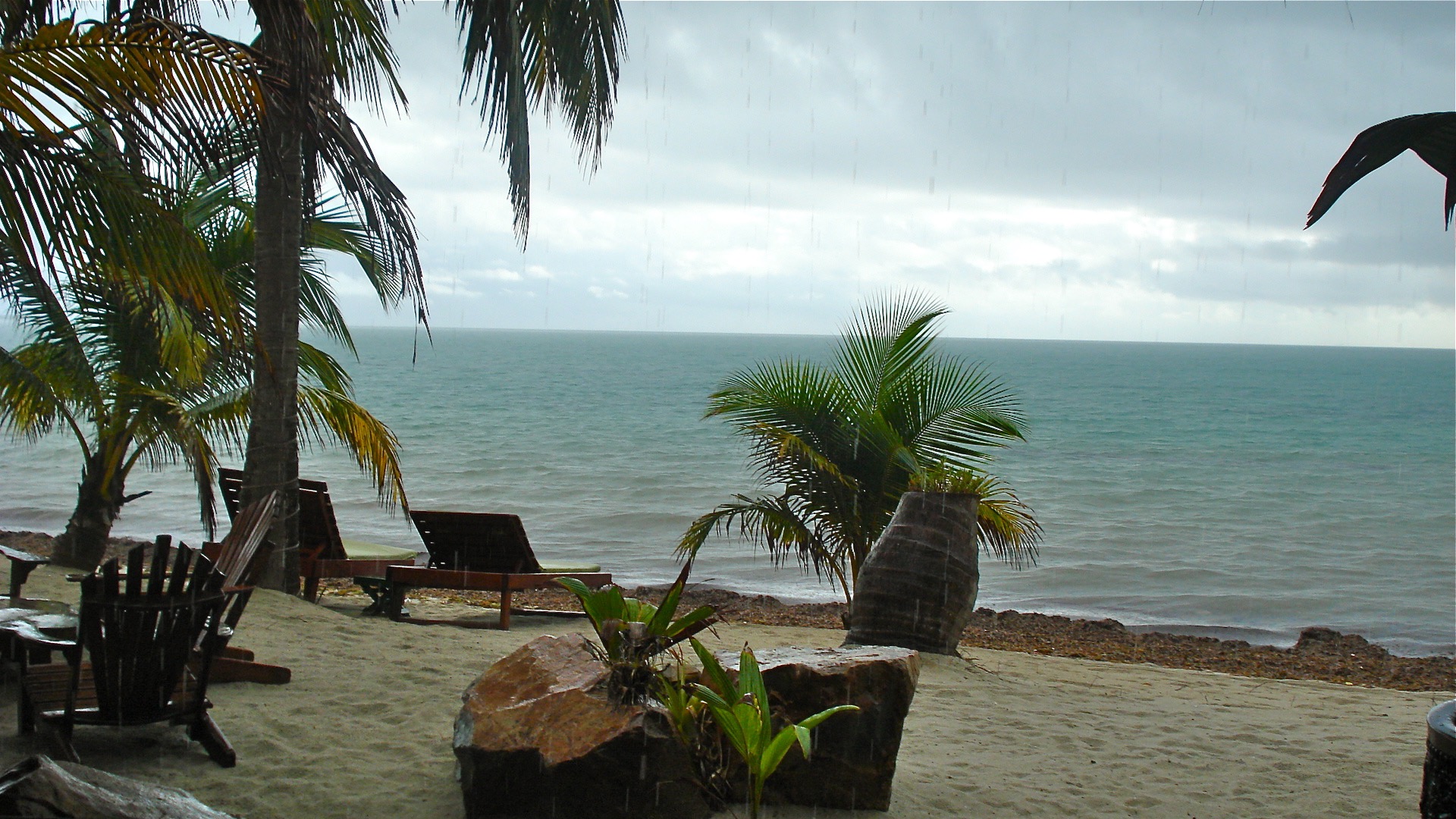
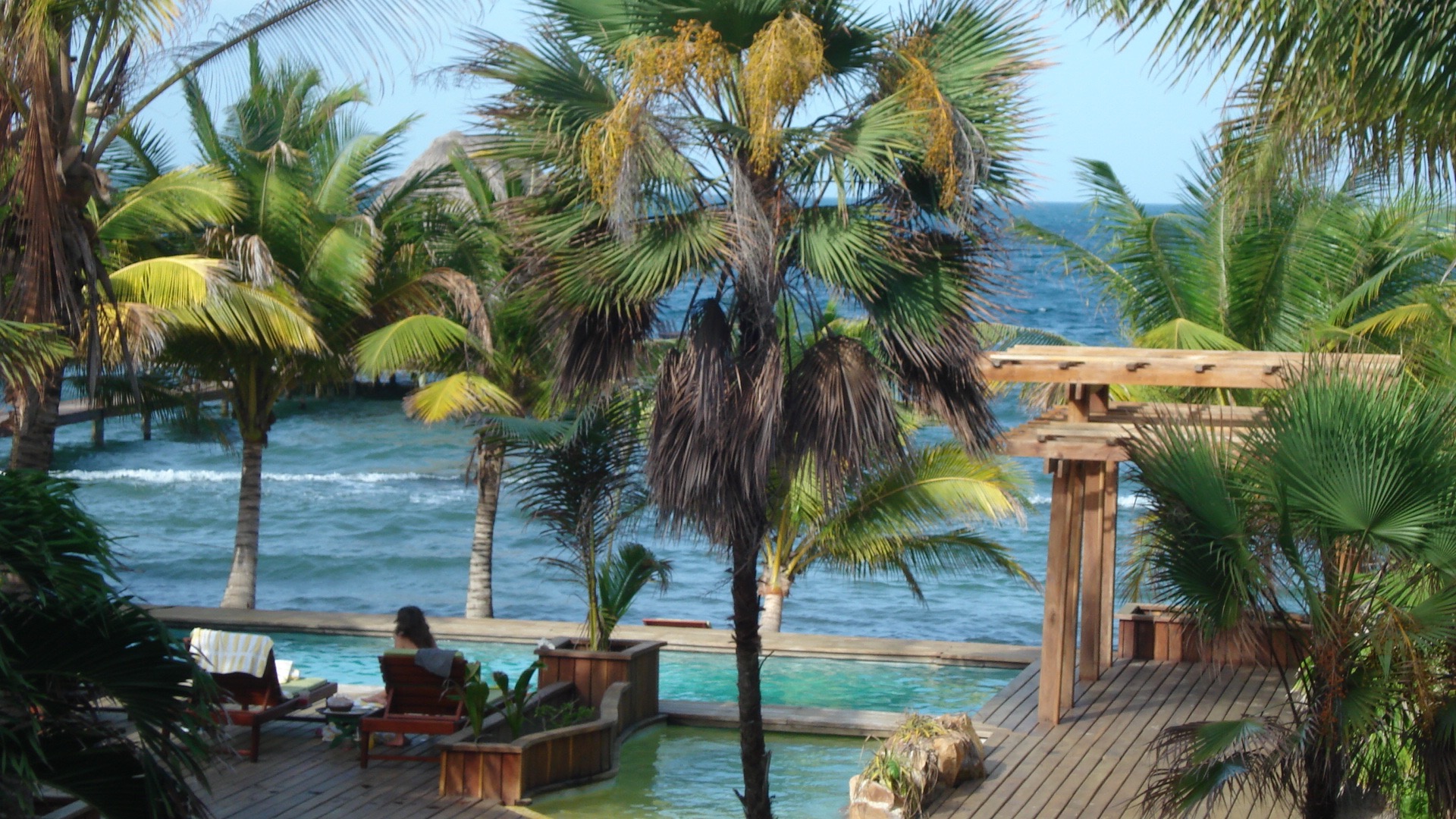
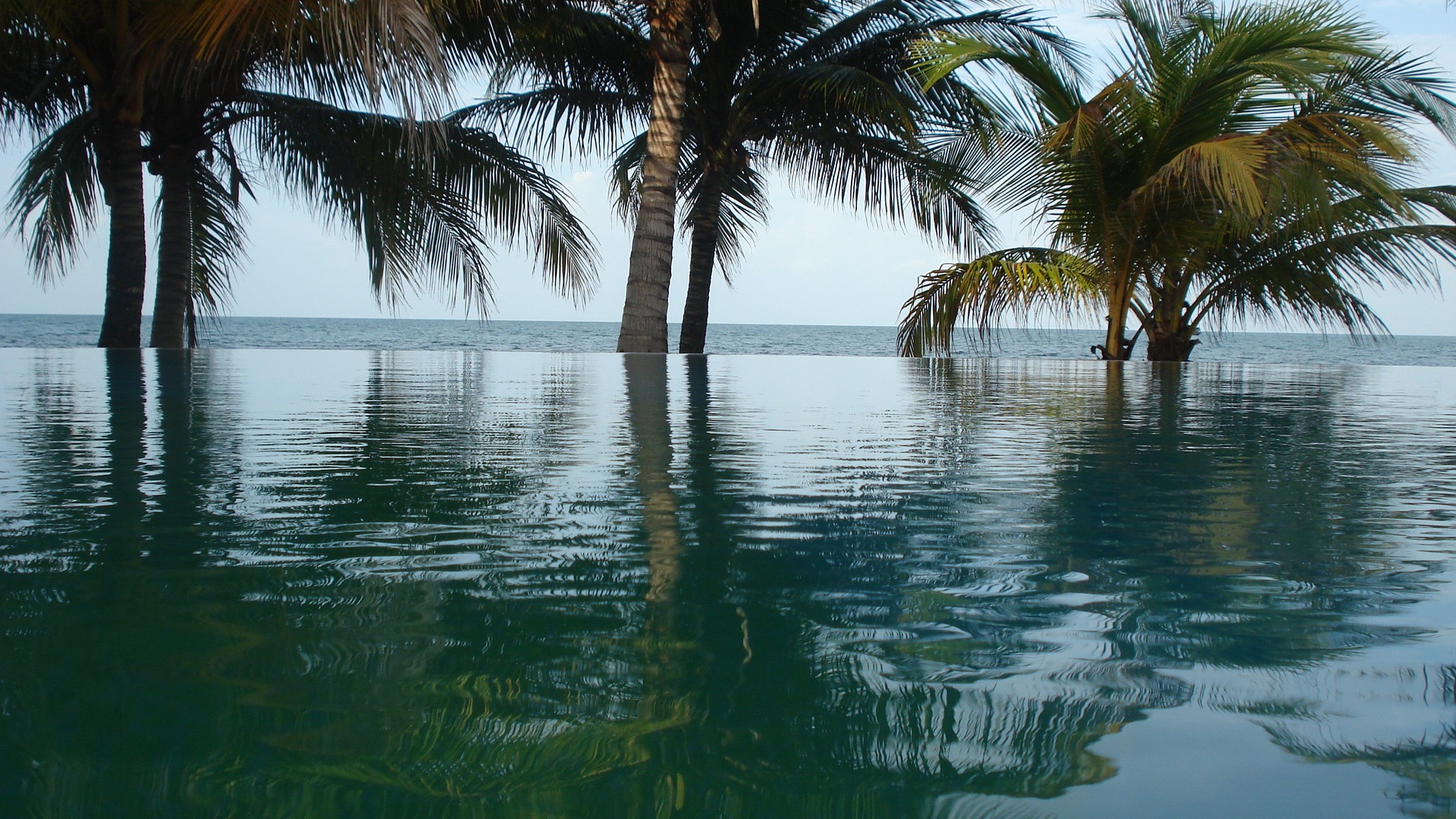
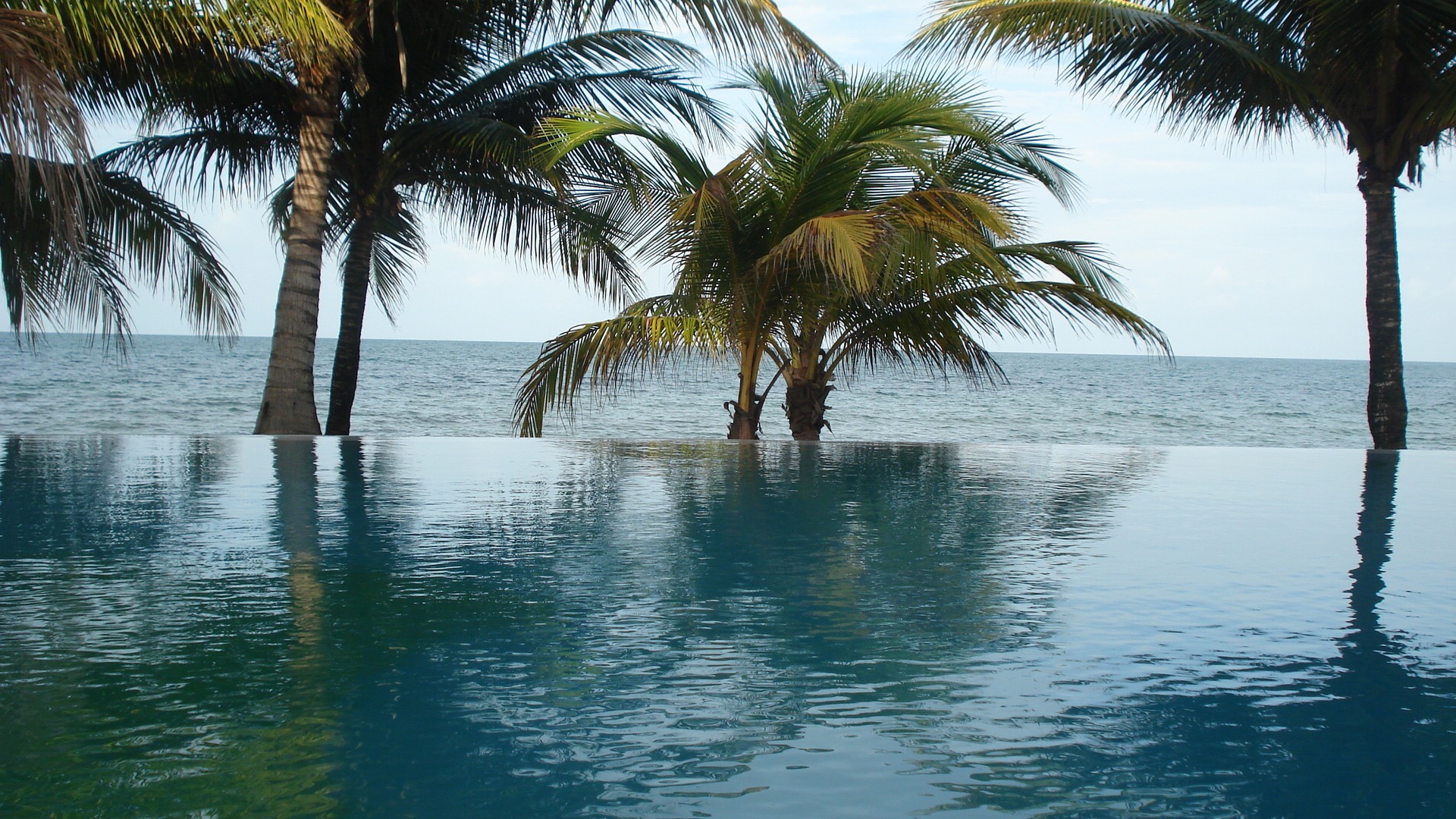
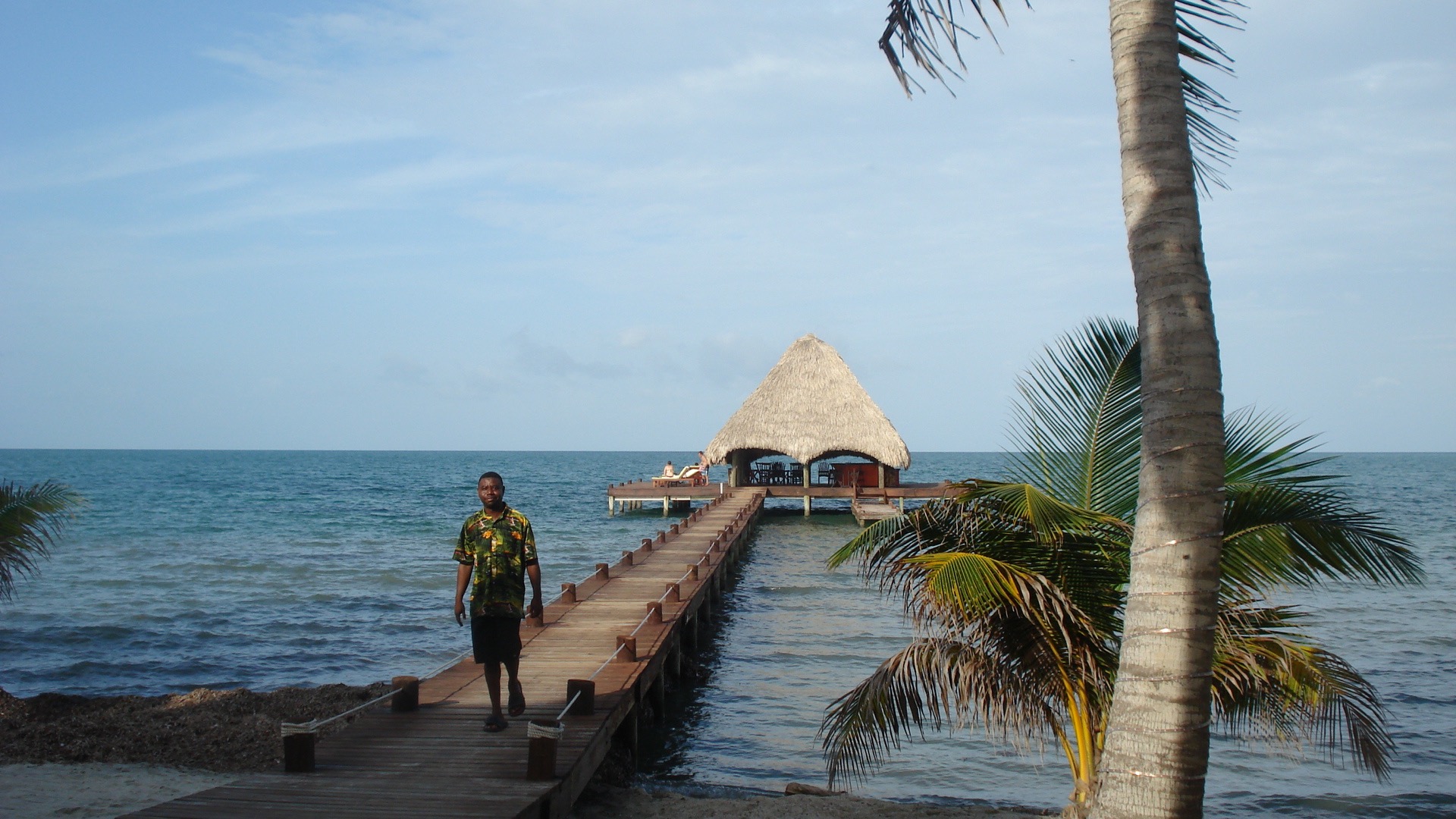
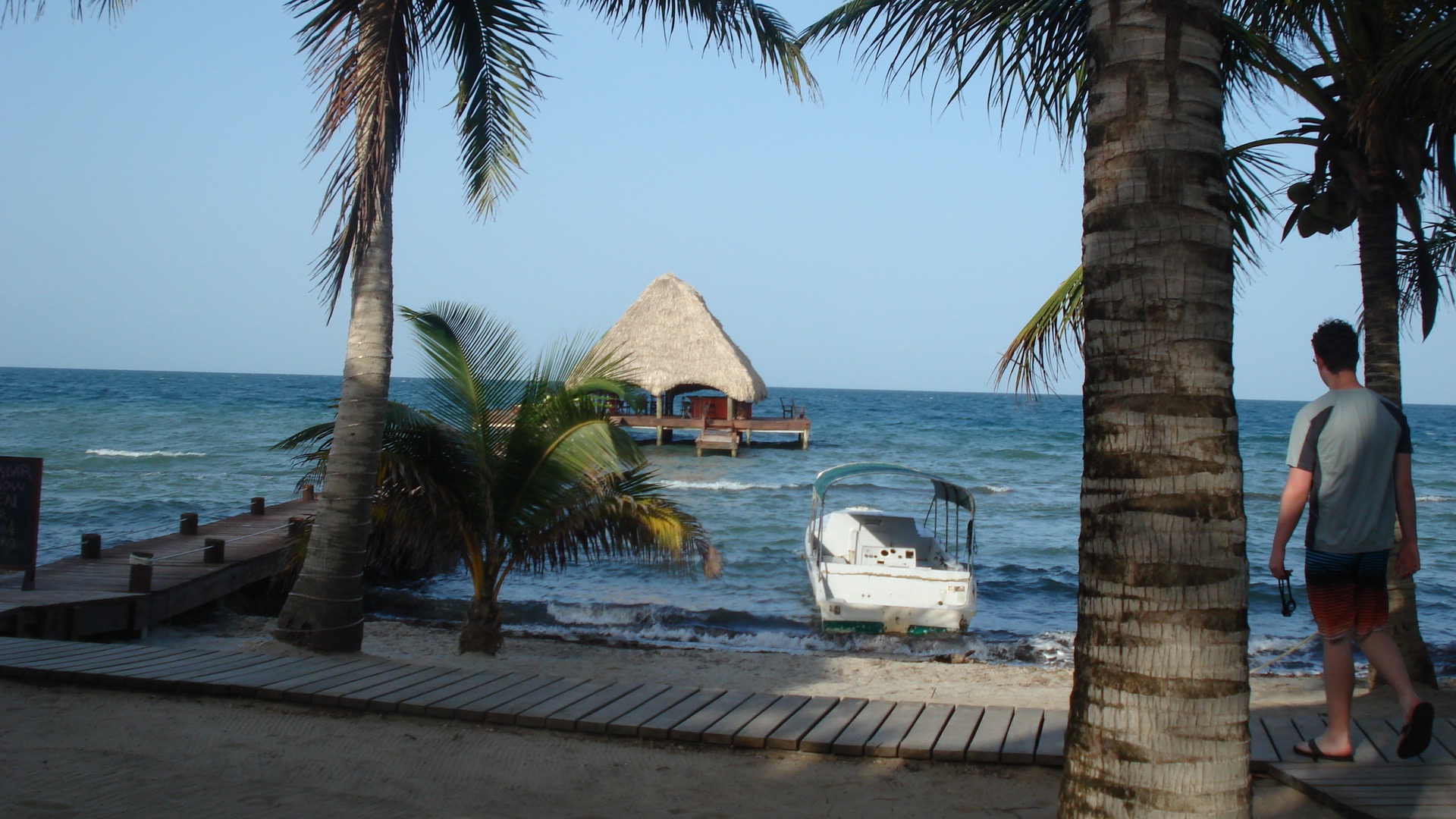
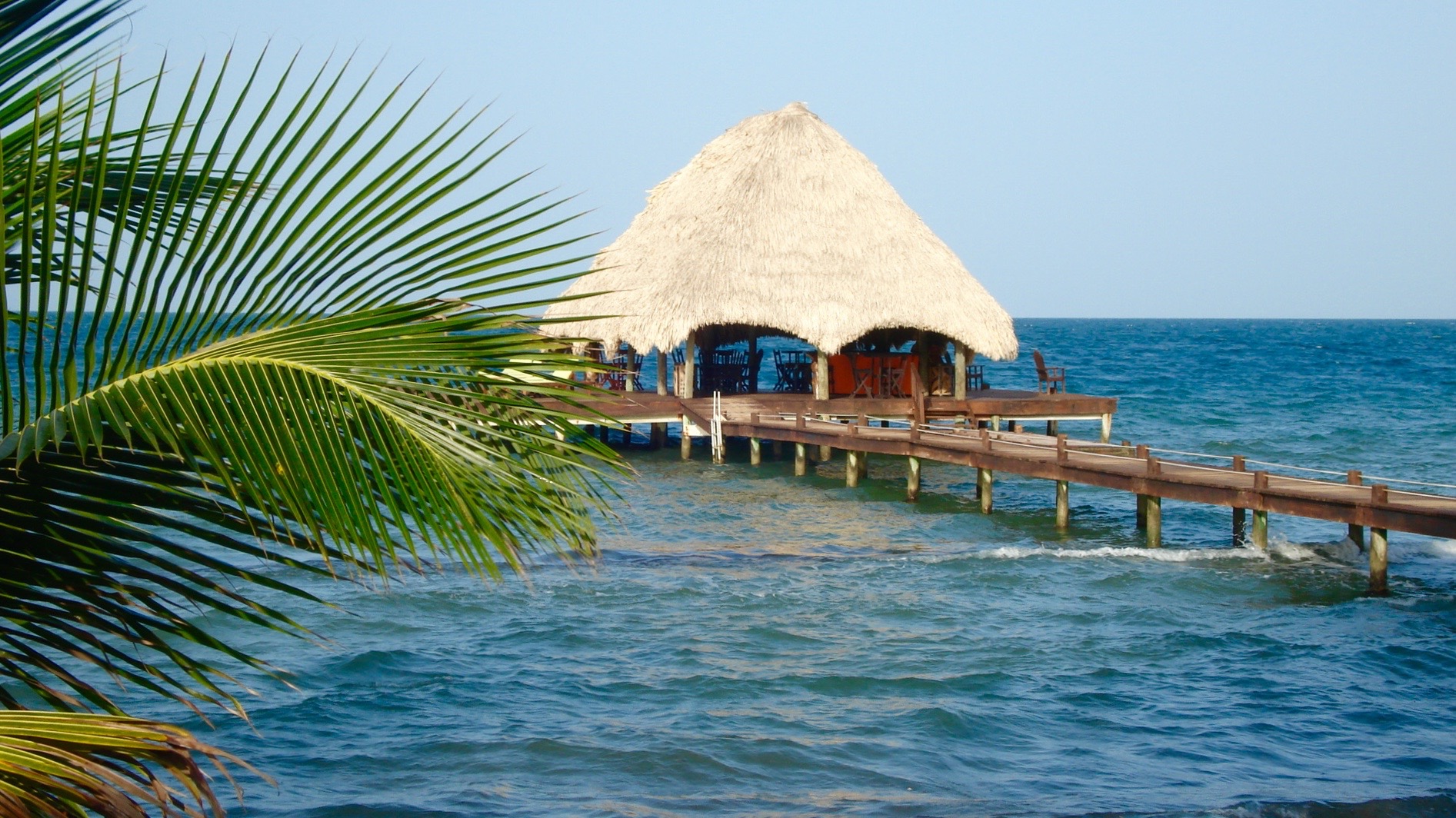
Our resort, “Robert’s Grove,” was a couple of miles from the “airport.” From the time we arrived until we left, we experienced the warmest, most courteous and helpful staff we could ever imagine. The resort was well kept with nice rooms and beds (though the air conditioning in the boys’ bedroom didn’t work, and consequently they got their own room, which suited them fine). The resort was located on a narrow and long peninsula, along with other vacation resorts. Directly to our north was the small, poverty stricken village of Seine Bight. This village boasts the first Belizean chocolate factory, in a small building, which makes Goss brand chocolate. (We loaded up on Goss chocolate to bring home, and as I write this I am munching on one of their chocolate bars. It rivals the best of European chocolate.) This area of Central America was the epicenter of cacao growing and still produces quite a bit of it. But up until now the beans have been shipped elsewhere for chocolate production. Nevertheless, I think they are onto something wonderful in producing their own.
Several miles to our south was the main village of Placencia, with one road, dotted with ramshackle shops, bars, and restaurants, and one long sidewalk by the sea with shops and vacation homes. (We rented a golf cart as our means of transportation into Placencia.) The entire peninsula is narrow, with a bay on one side and the Caribbean Sea on the other. Our resort spanned our part of the peninsula, and we used both the bay and the ocean.
We had purchased an all-inclusive package: flights, room, all meals, and four adventure excursions. Though expensive, the price was cheaper than the normal rates. We learned the reason; it was the wet season. It rained every day but alternated unexpectedly throughout the day between drizzle, heavy rain, and beautiful sunshine. We learned to pay no attention to the weather or the weather reports. Like everyone else, we just went about our business, rain or shine.
And the meals at our resort were spectacular: excellent steaks, seafood, lobster, desserts, Mexican food, fruit galore.
So, did we avoid the sun and sand? Not exactly. We slathered ourselves in sun block and insect repellent (mosquitoes and other insects were by far the most dangerous animals); for our excursions we wore long jungle pants and shirts, broad brimmed hats, and hiking boots. For swimming and snorkeling we wore long, board shorts and rash guard shirts. Nevertheless, we still got a lot of sun and no small number of bug bites, but they were not debilitating. And I kept my pledge to myself: though I was in the water every day, I never once laid out on the beach in the sun. (I did lay on a lounge chair in the shade by one of the three salt-weather pools next to the beach.) Speaking of the beach, covered by coconut palm trees as it was, it fit the prototype for Caribbean post cards to lure tourists—a beautiful setting. And the ocean water was as warm as a warm bathtub, with a sandy bottom.
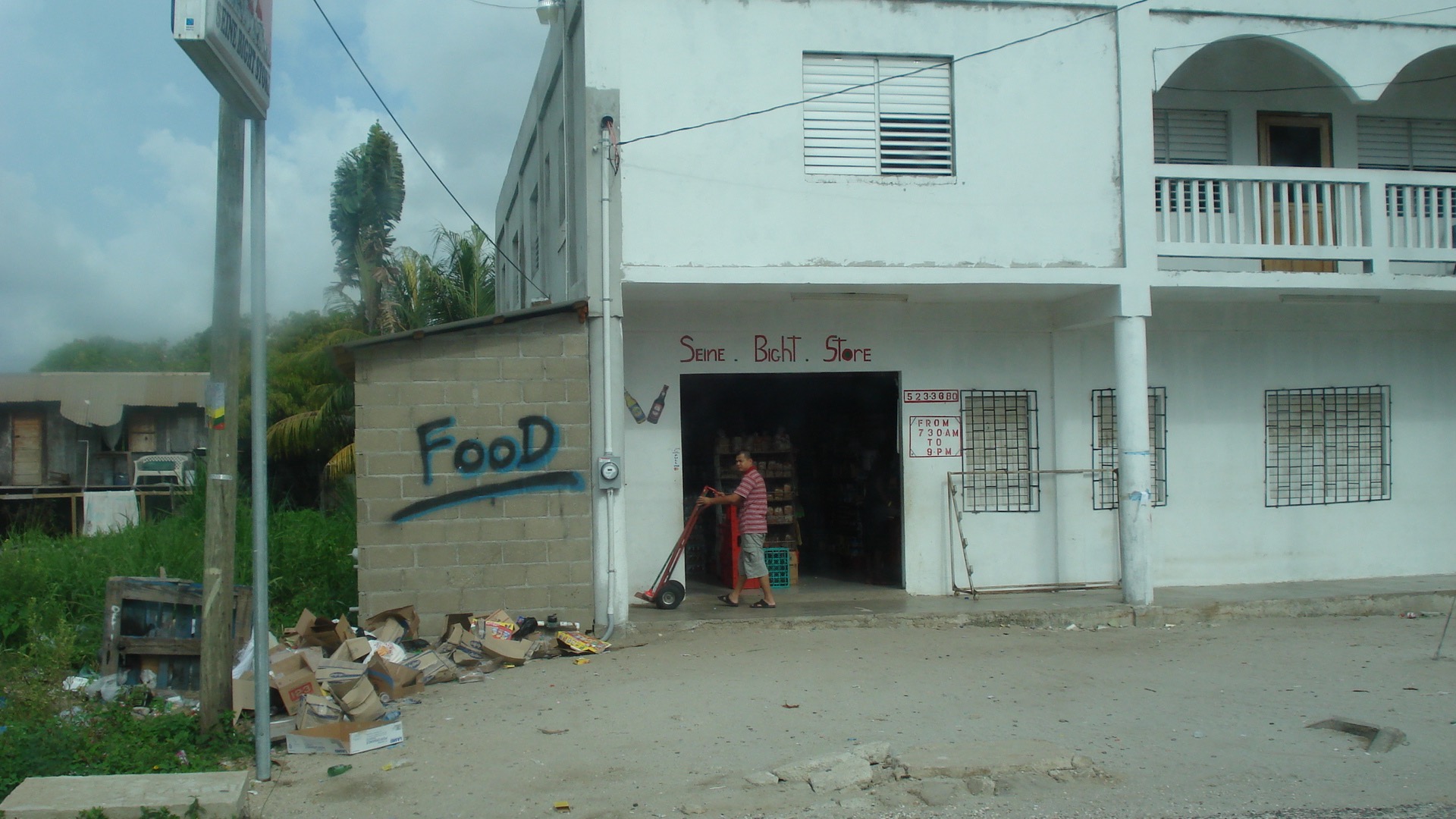
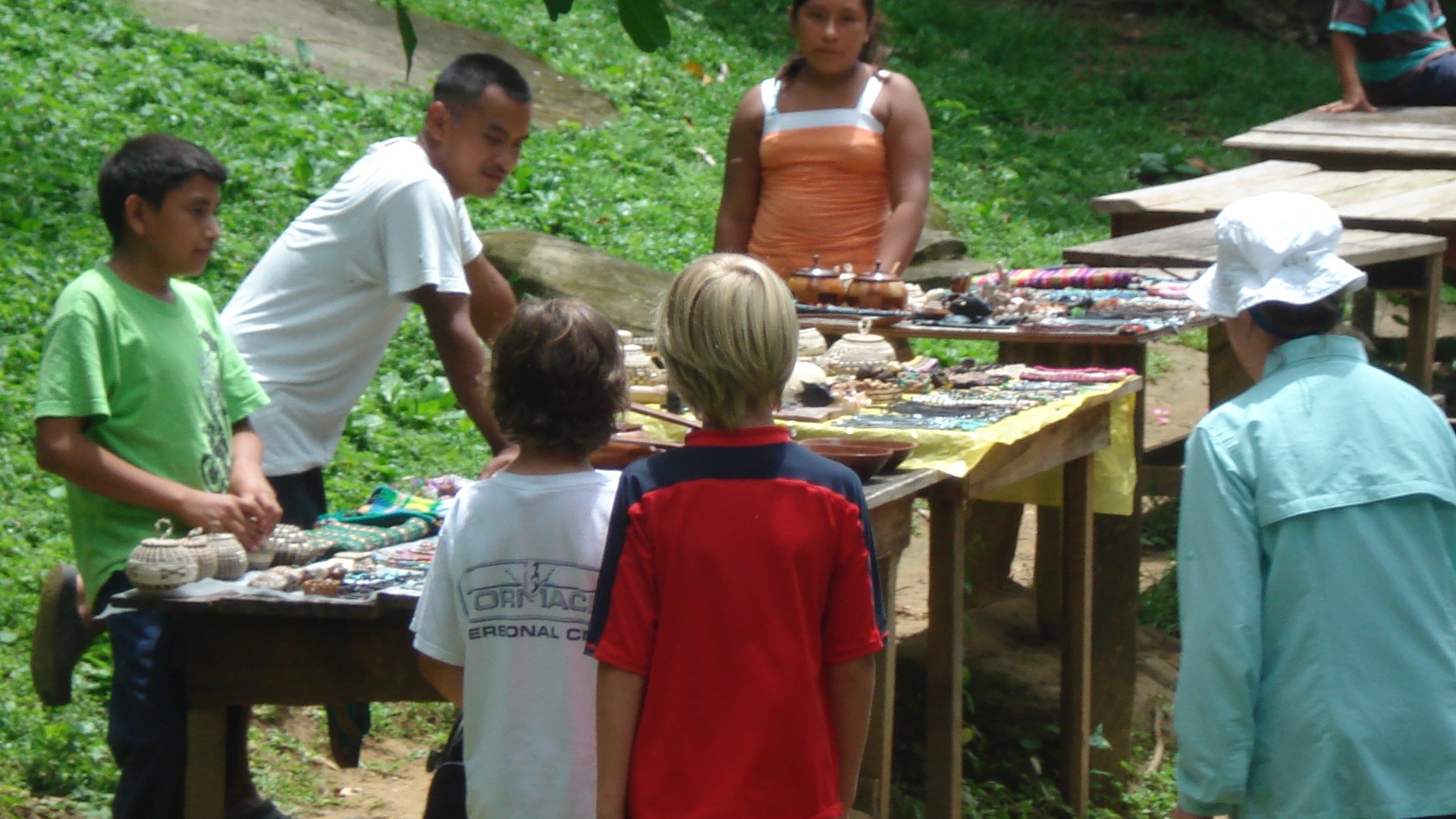
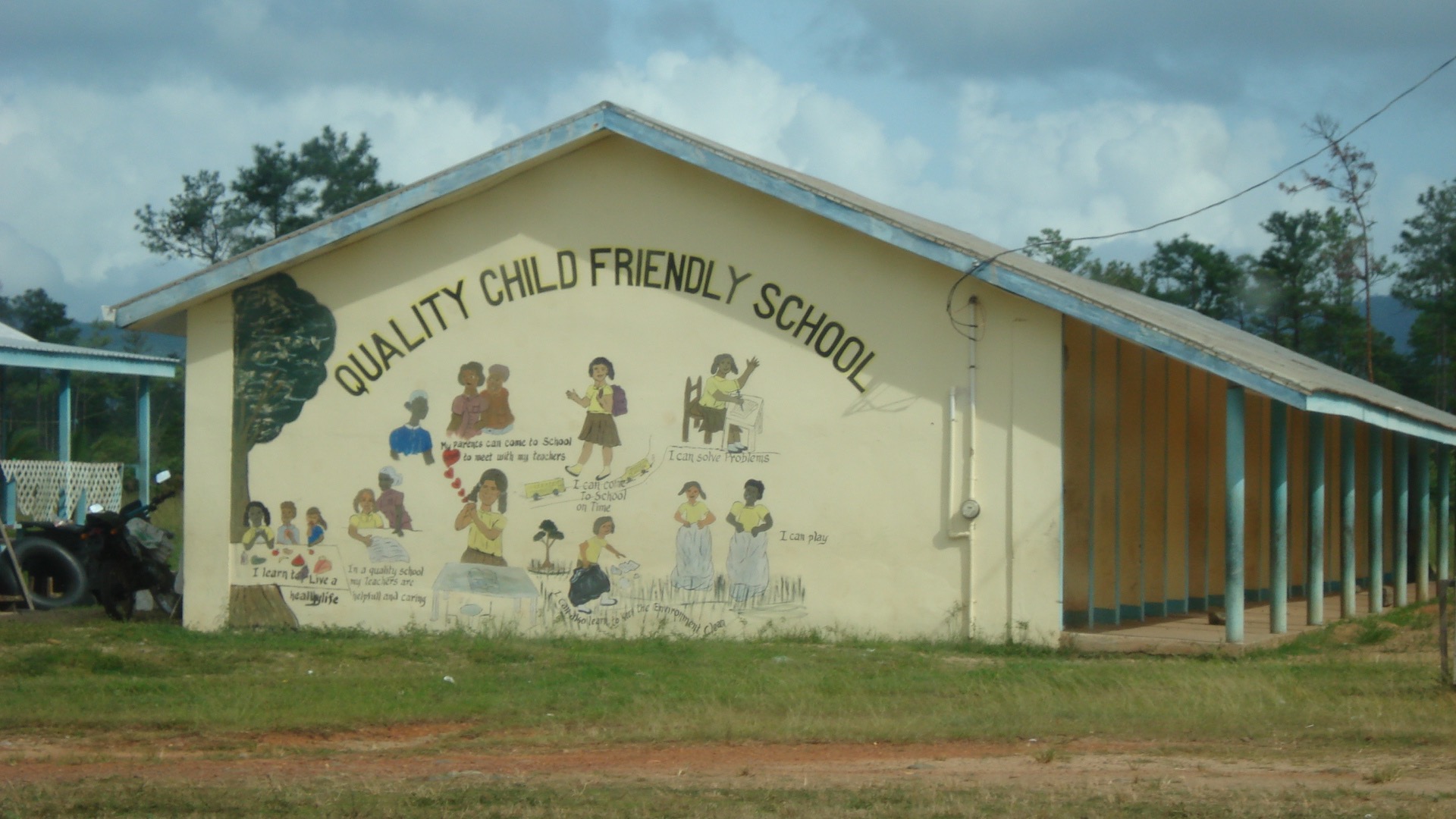
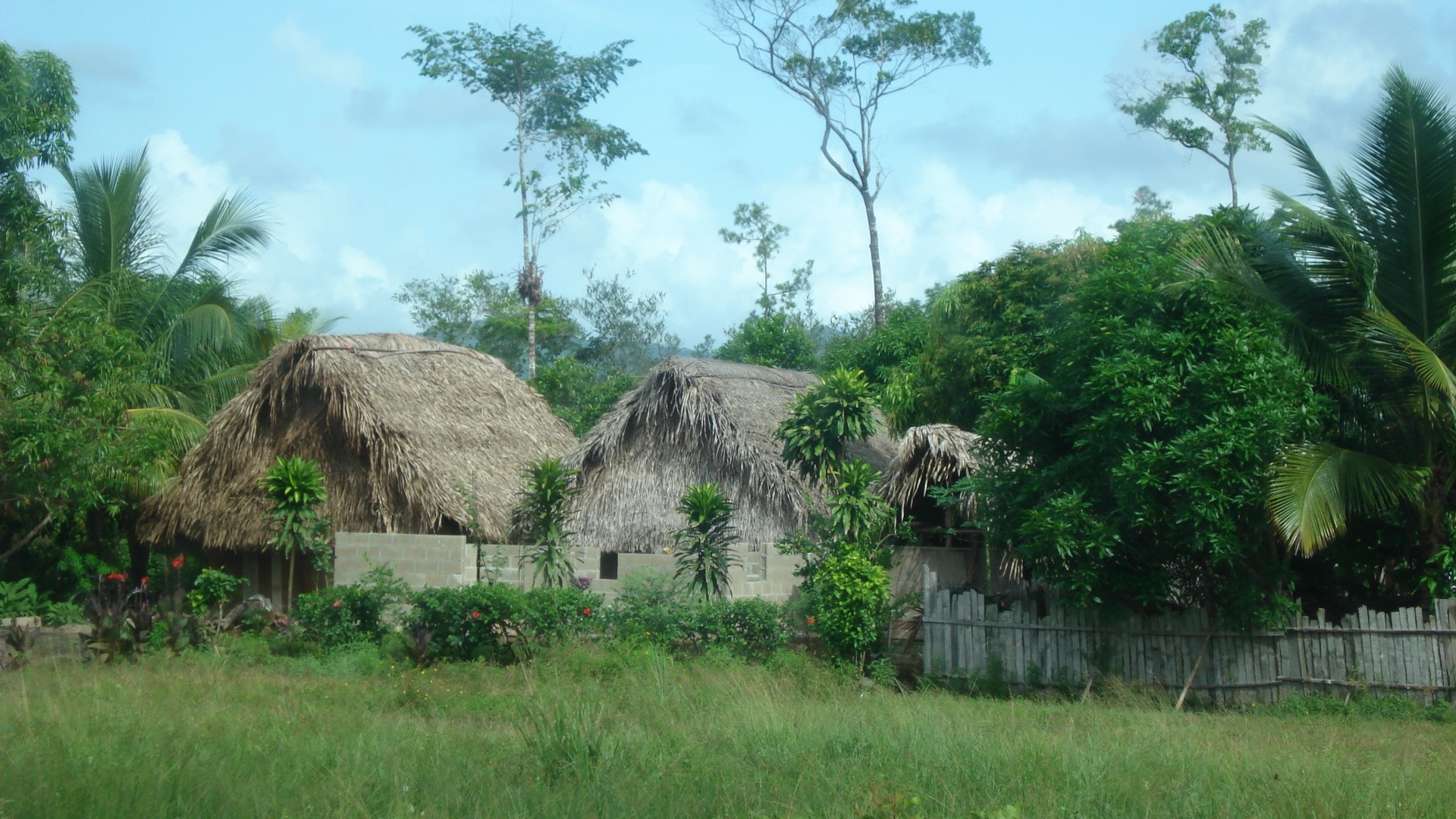
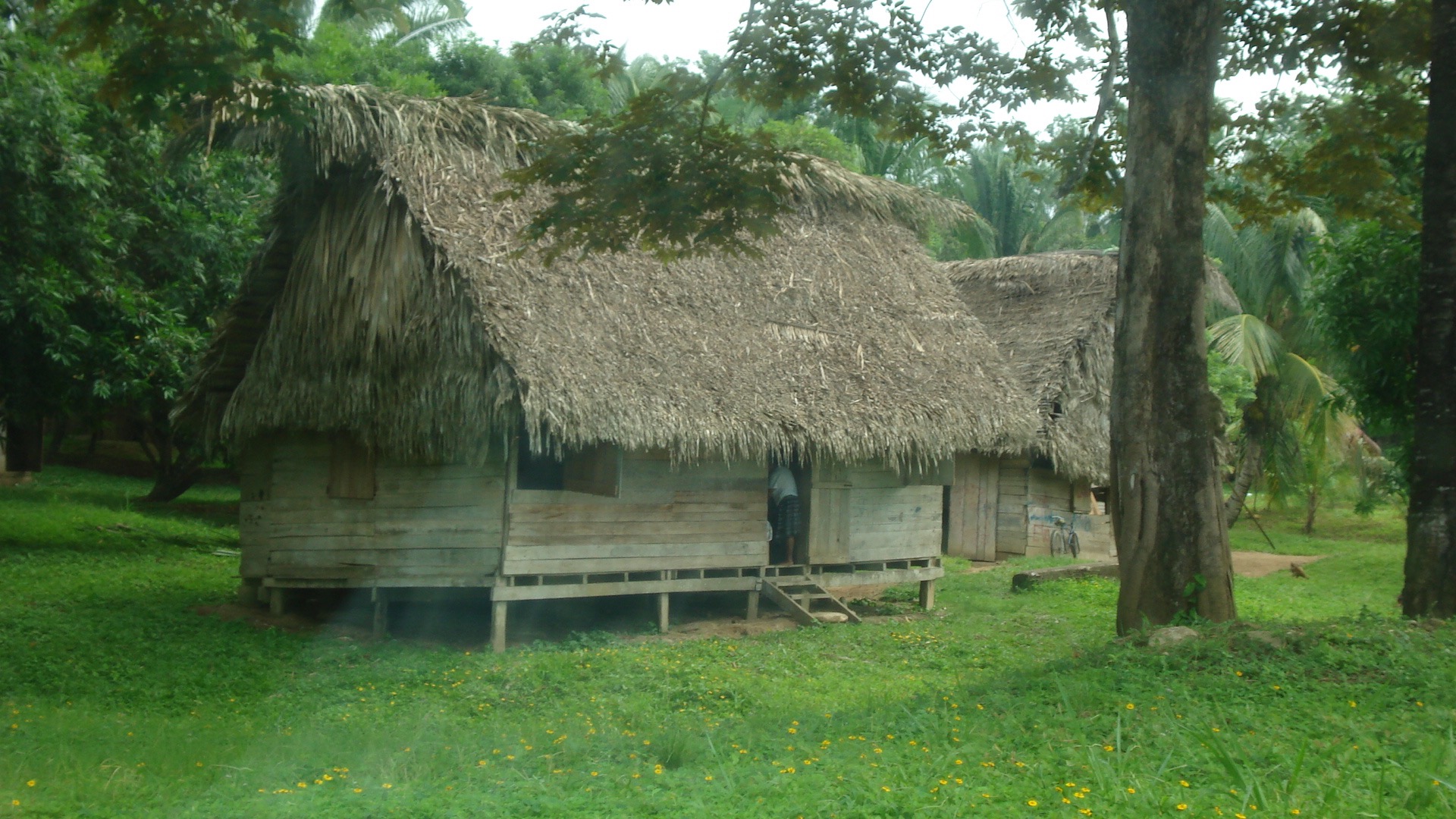
Now let me tell you about our four excursions, each lasting most of a day, and each led by a Mayan guide. The first was a van ride into the interior, past some Mayan villages with their grass roofed homes and to the old Mayan ruins in the rain forest at Nim Li Punit. We learned about two noteworthy cultural practices from the ancient Mayan culture that inhabited this region. First, we saw an ancient ball court in which two opposing players worked at keeping a solid rubber ball in the air bouncing it off their bodies and the opposing walls, blocking each other, and attempting to score goals by placing it through hoops on each side of the court. Perhaps it was a cross between basketball and quidditch. (We sat in the spectator seats that were built into the hillside nearby.) Now comes the fun part. These players were most likely not volunteers. You see, this game determined who would be the next human sacrifice to their gods. After the match, the loser was taken to a nearby hill, where the priest cut out his heart, probably squeezed out a little blood for himself and then threw the dripping heart into the holy fire. Wait a minute, didn’t I see that in the second Indiana Jones movie? It was because of that scene in Indiana Jones (which was rated as PG) that folks came up with the new movie rating of PG-13. In truth, I don’t think those events actually qualified as a “game” that people “played,” unless you have a different definition of play than I do.
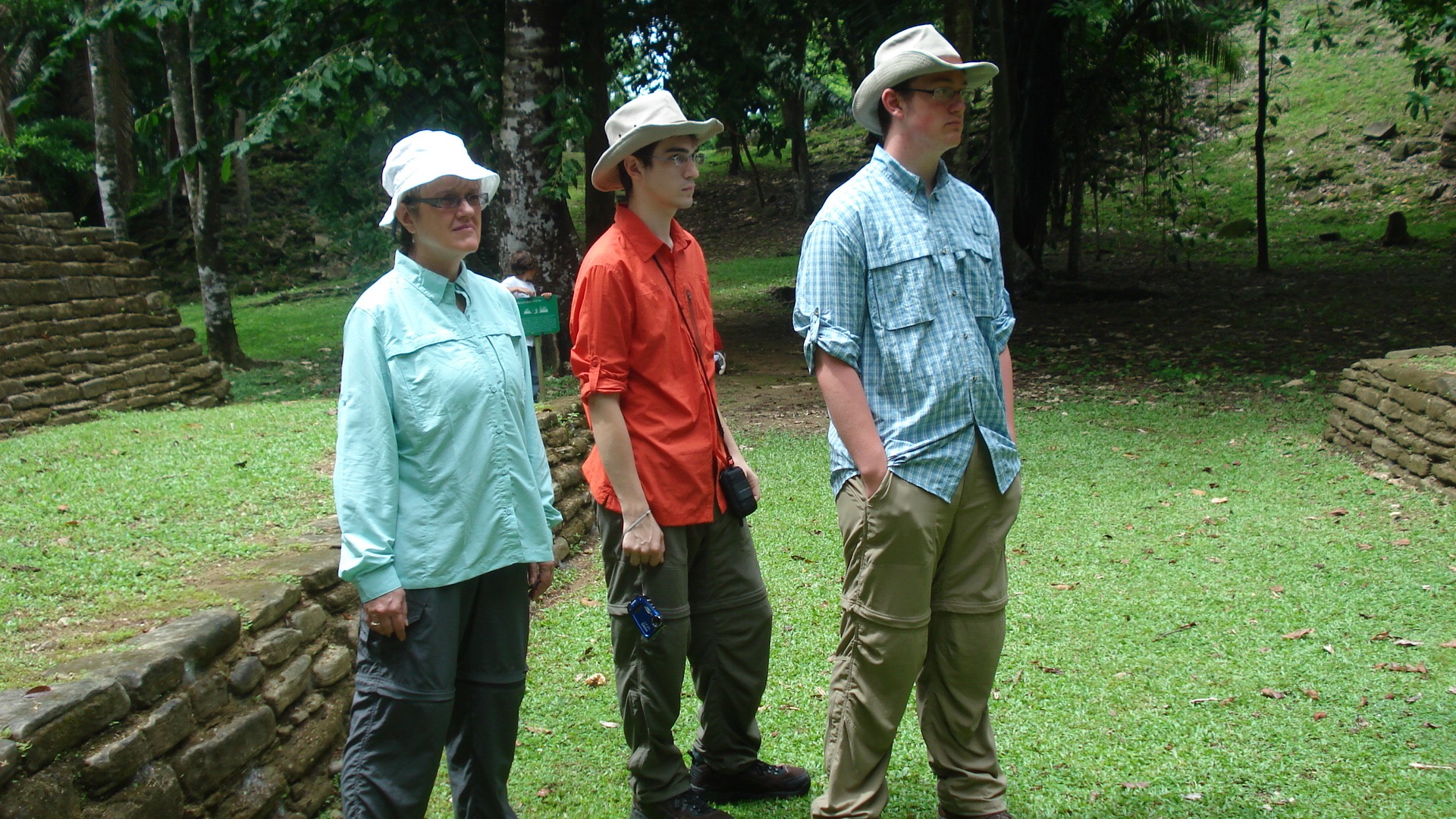
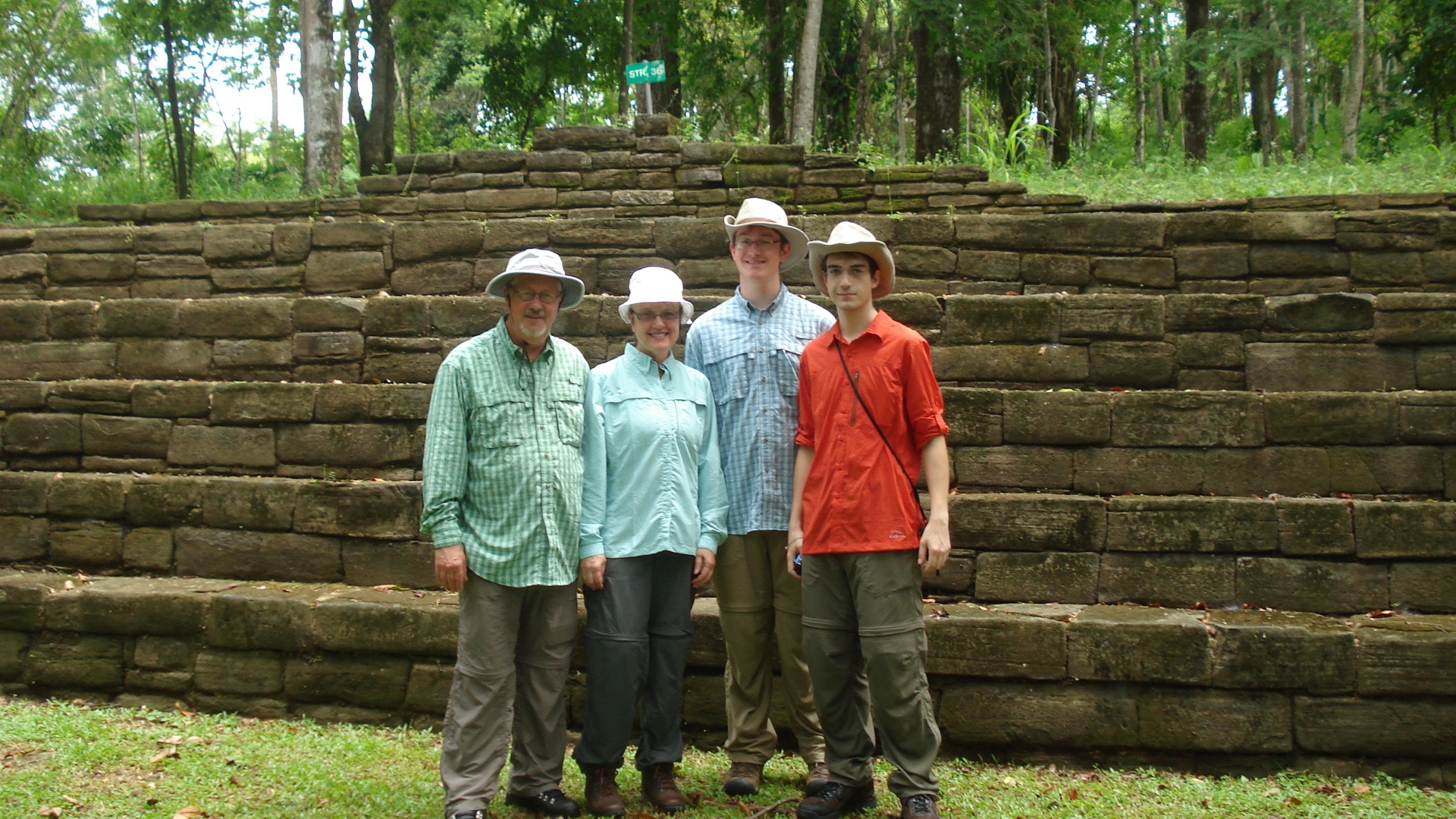

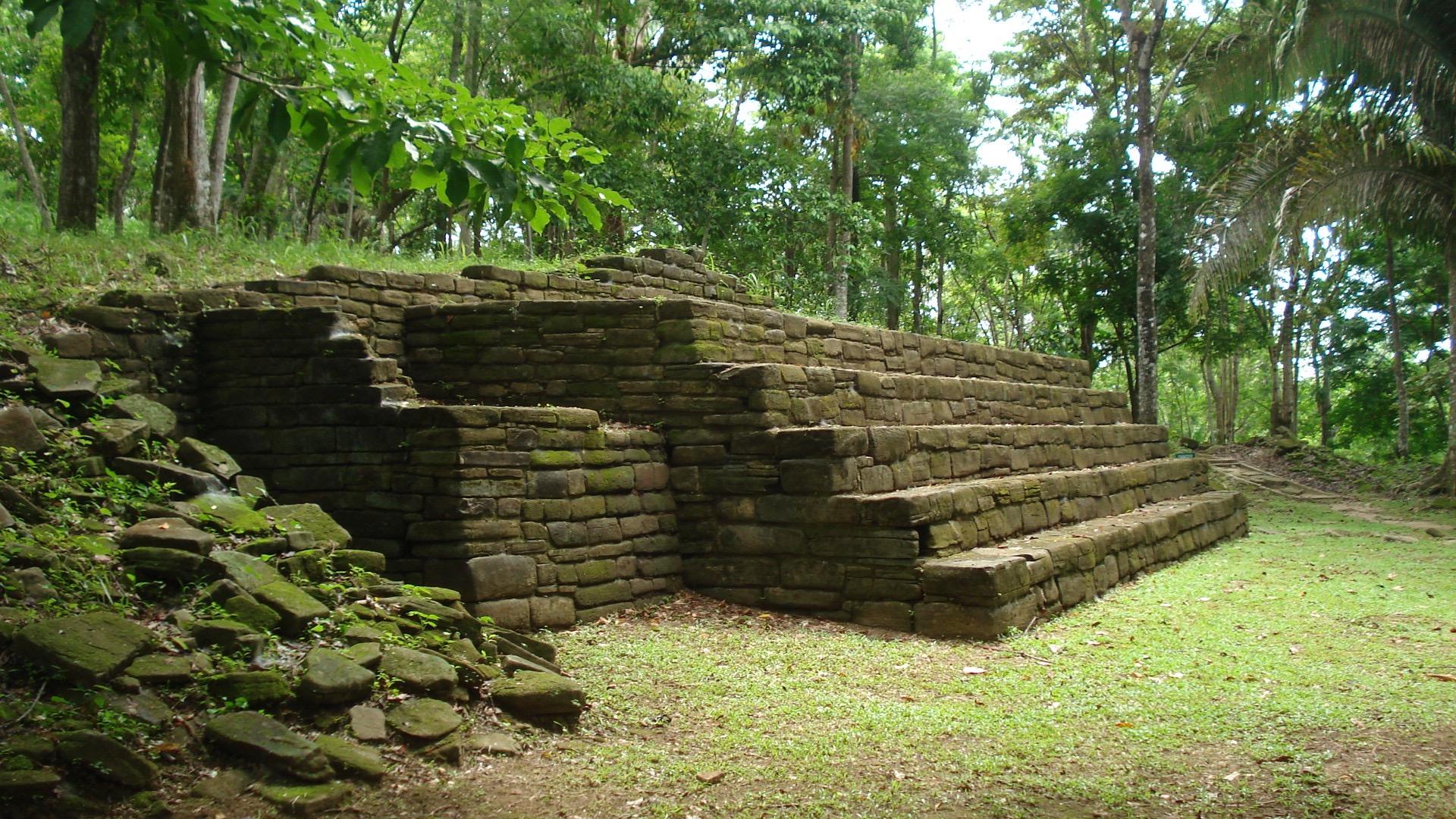
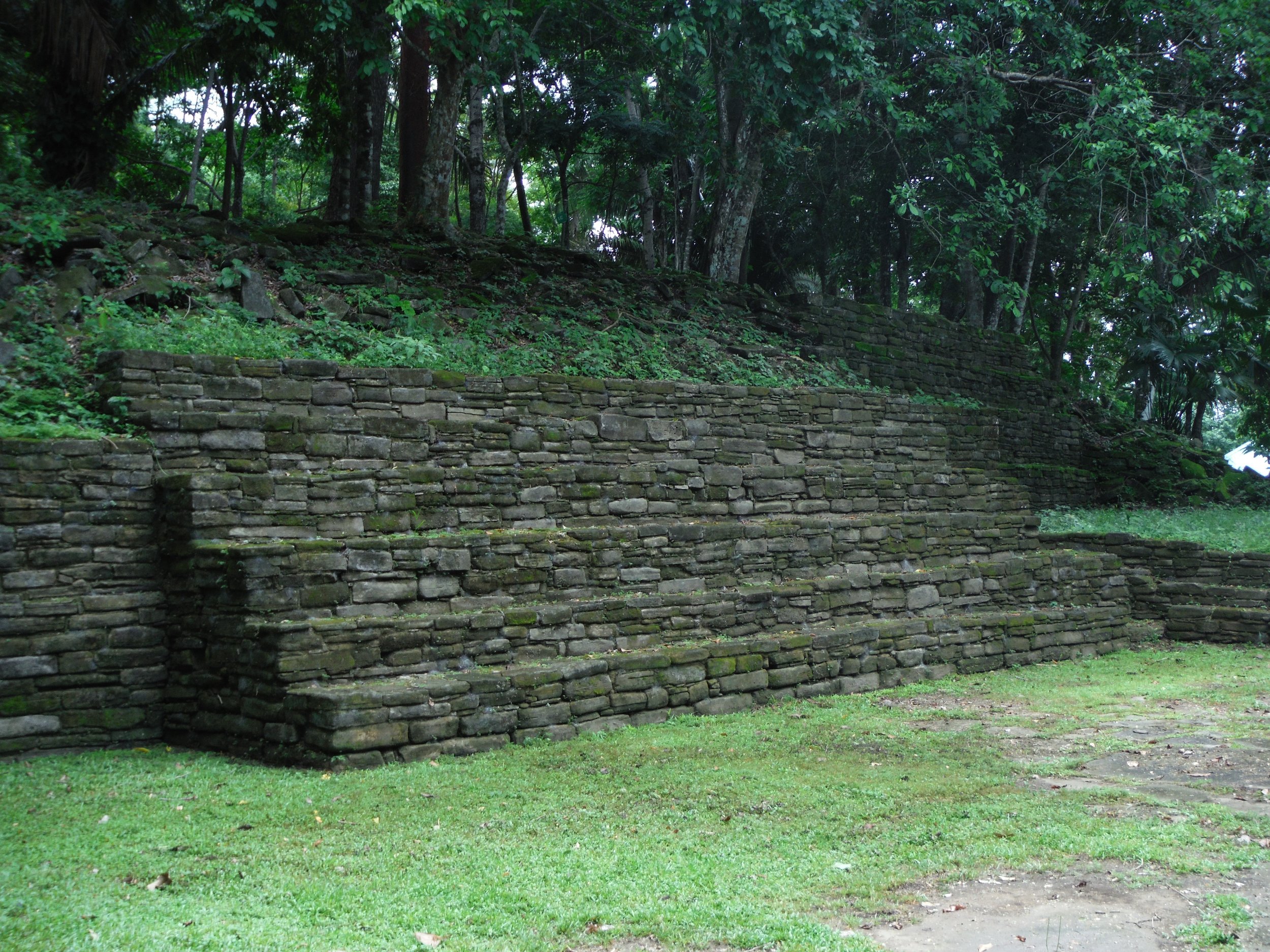
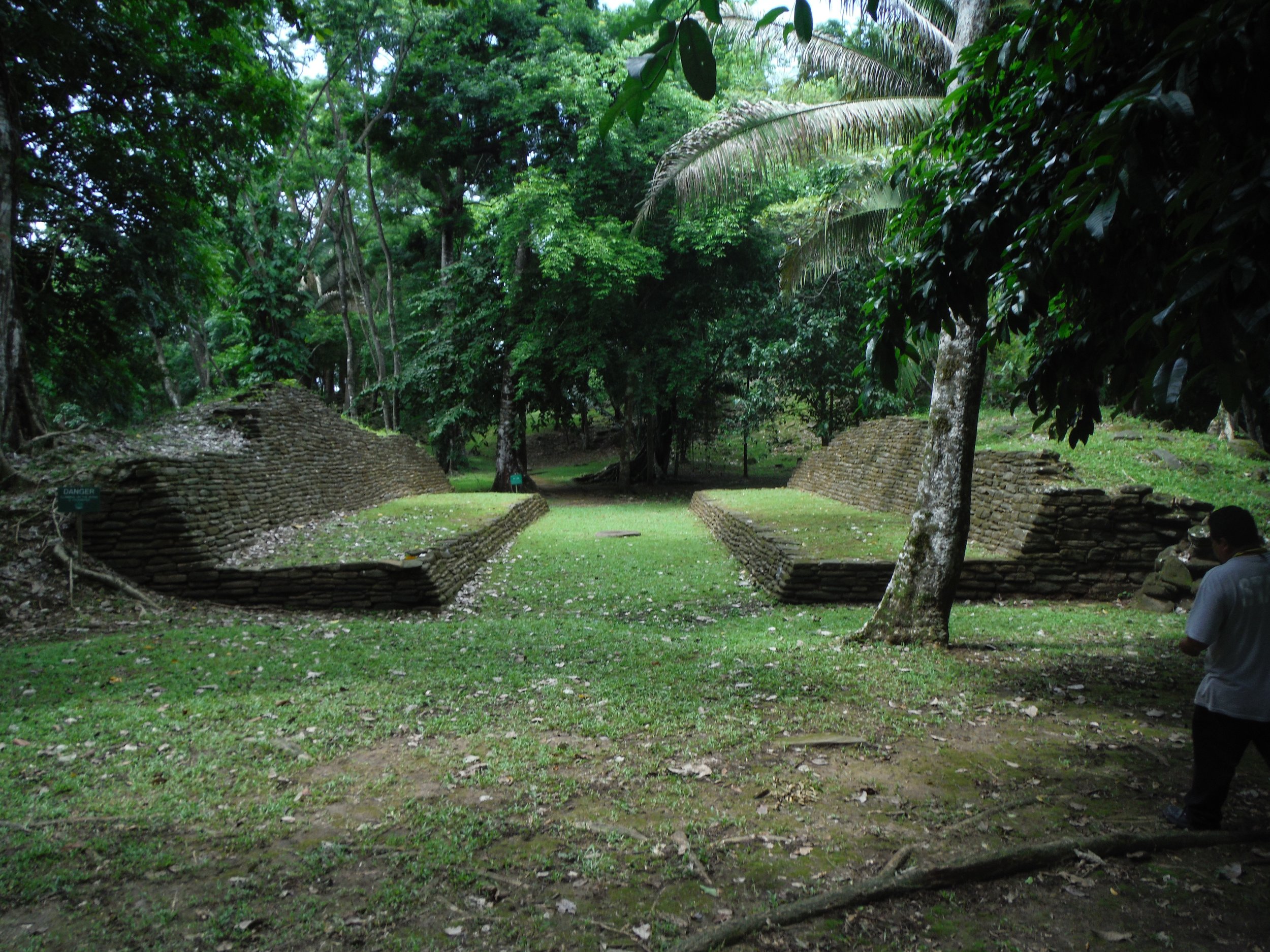
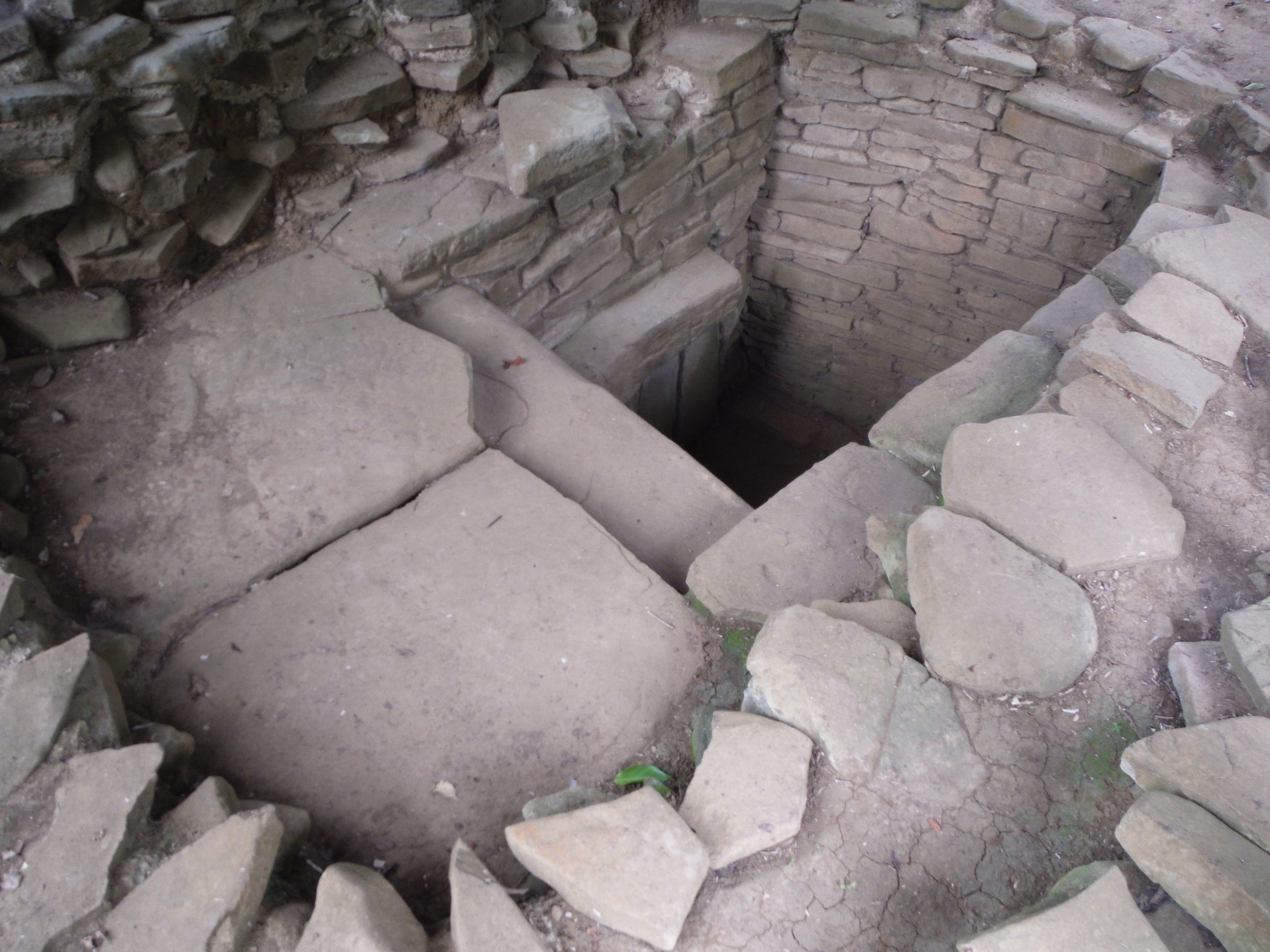

The second cultural practice that caught my attention came from our guide’s translation of a carved picture on one of the large stellas in the area. A woman is seated on one side of a burning pot, and a man is standing on the other side. The scene depicts the ancient practice of ensuring fertility in a marriage. The man cuts his penis and allows blood to drip into the fire made of several sacred herbs; the woman cuts her lip and lets her blood drip on top of his. The more blood they spill, the more assurance they acquire that they will have several children. I don’t know, I think it would suck out my desire to have a family.
After visiting the ruins, and cutting into a rubber tree to see the sap flow and picking avocados in the wild and eating a palm tree nut that seemed to be a cross between a coconut and a Brazil nut, we headed to another Mayan village for lunch. We crossed a stream to reach someone’s humble home, washed in their outdoor sink and ate at a buffet that they had prepared for us of rice and beans (ubiquitous in all native Mayan meals), whole chicken stew, vegetables, pork, fish, and the ever present and most delicious home-made tortillas. For the entire trip we drank bottled water, Fanta, and coke, as we did here. The meal was absolutely delicious.
After lunch, we drove to the most physically challenging part of our entire vacation. We hiked through the rain forest (I prefer the term “jungle” because the place reminded me of old jungle movies I have seen), along side a blue river and eventually came to a wet and steep rocky trail along the side the river. Beth has no vestibular system, a disability she acquired at birth, and she had a particularly difficult time negotiating the trail and rocks. At one point, she thought she could not go on—it was almost as tough for me, but she was a trooper, and we eventually made it to a huge cliff at the trail’s end. Then we donned life jackets and head lights, entered the rough waters, and carefully worked our way into a cave by clinging onto the rock walls so that we would not be washed downstream by the swift current. The walls were slick; the handholds were few; and the going was exhausting, but we managed to get deep into the cave. Thankfully, we had two strong sons to help pull us and another family in our group along when we couldn’t find handholds or fight the current. Without our head lights, the cave would have been pitch black. Apparently, there was a waterfall at the end of the cave, but the water level and current were unusually high and swift because of the rain, and we didn’t make it all the way to the end. That was fine with us; we were ready to let go and float with the current downstream and out of the cave; that was the easy part. Overhead were numerous bats hanging from the ceiling that seemed to be undisturbed by our presence below. It may have been the toughest thing I have done in my old age, but I am glad we went. We slept well that night yet were a little stiff the next day.
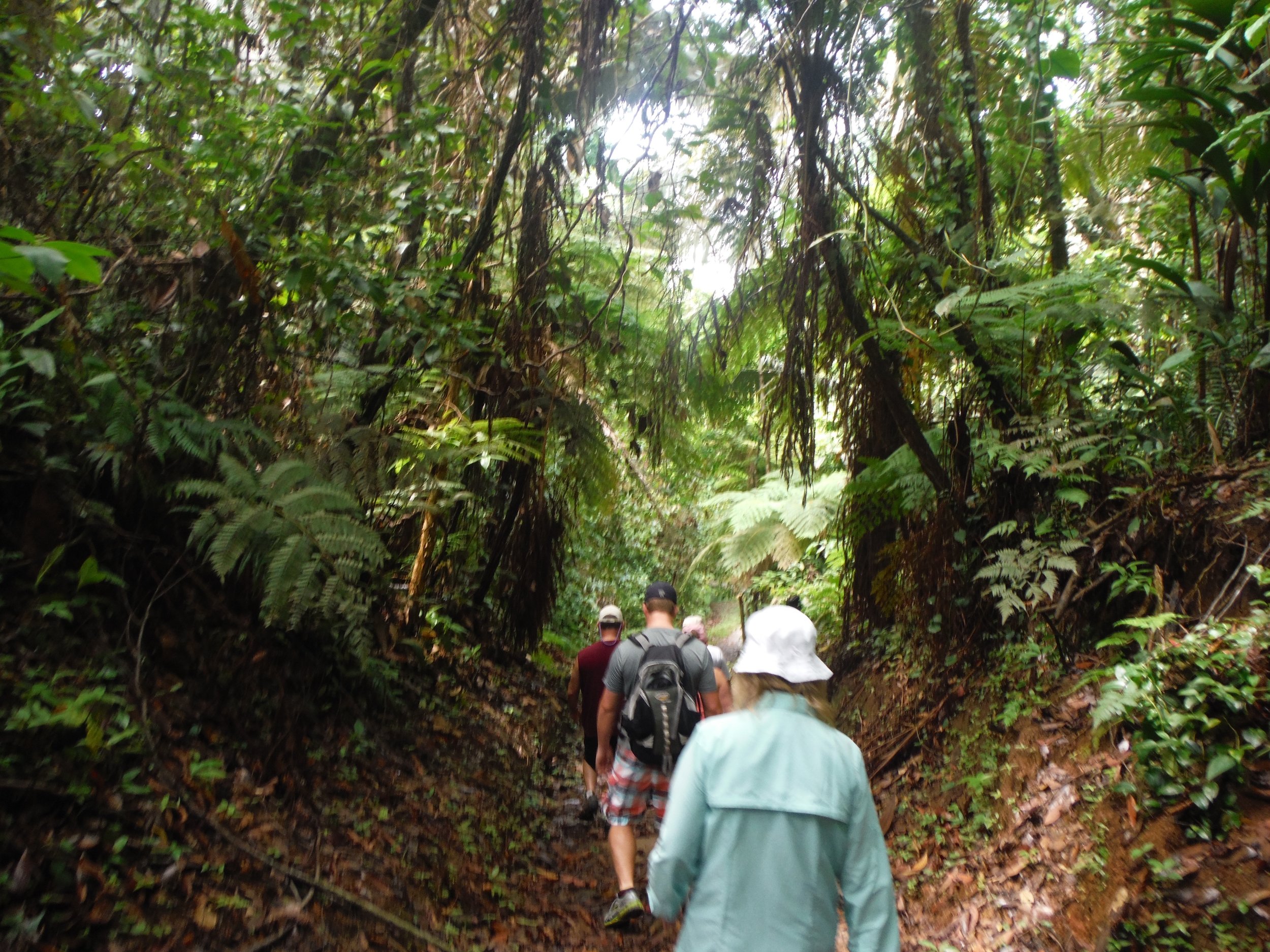
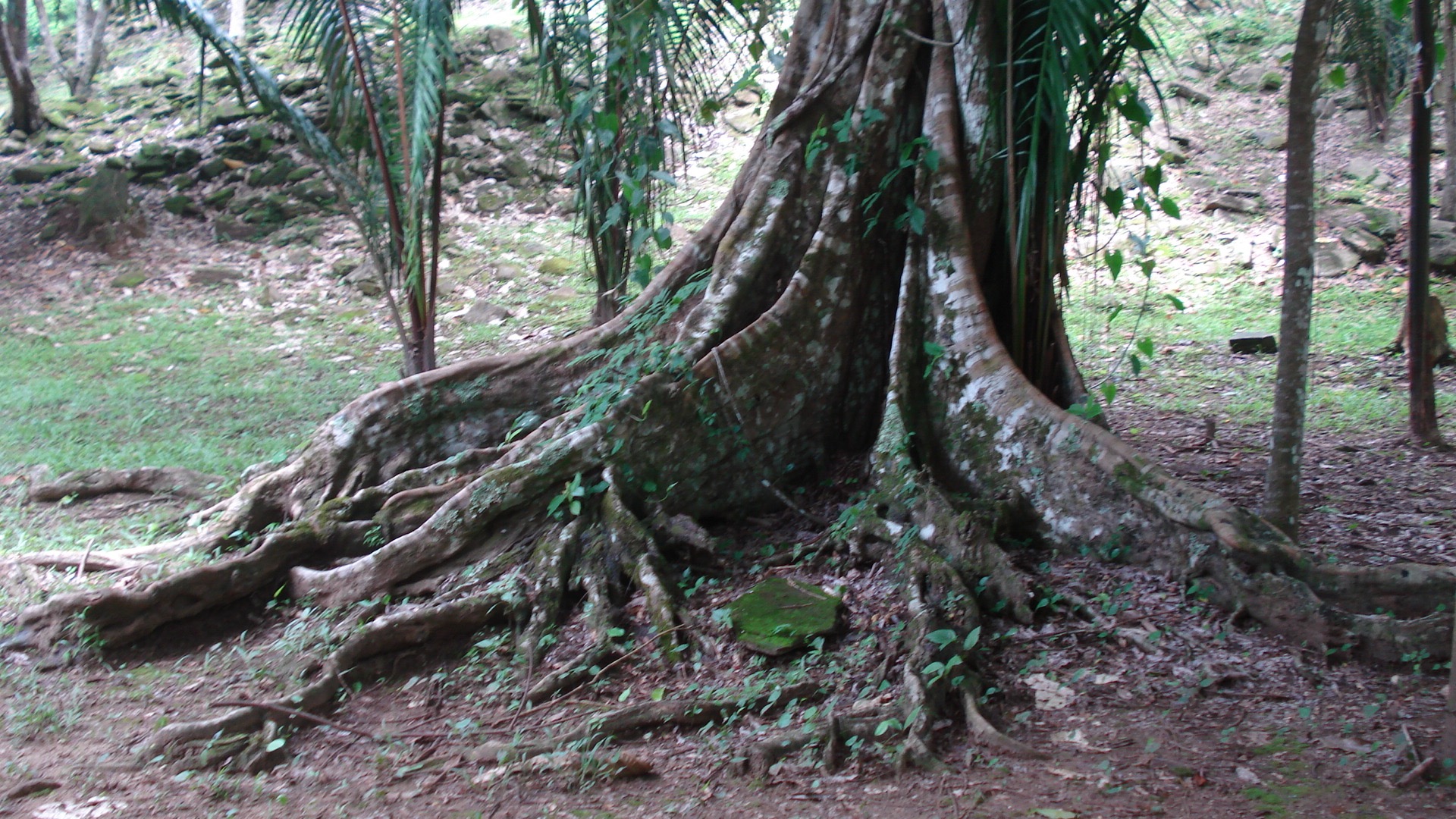
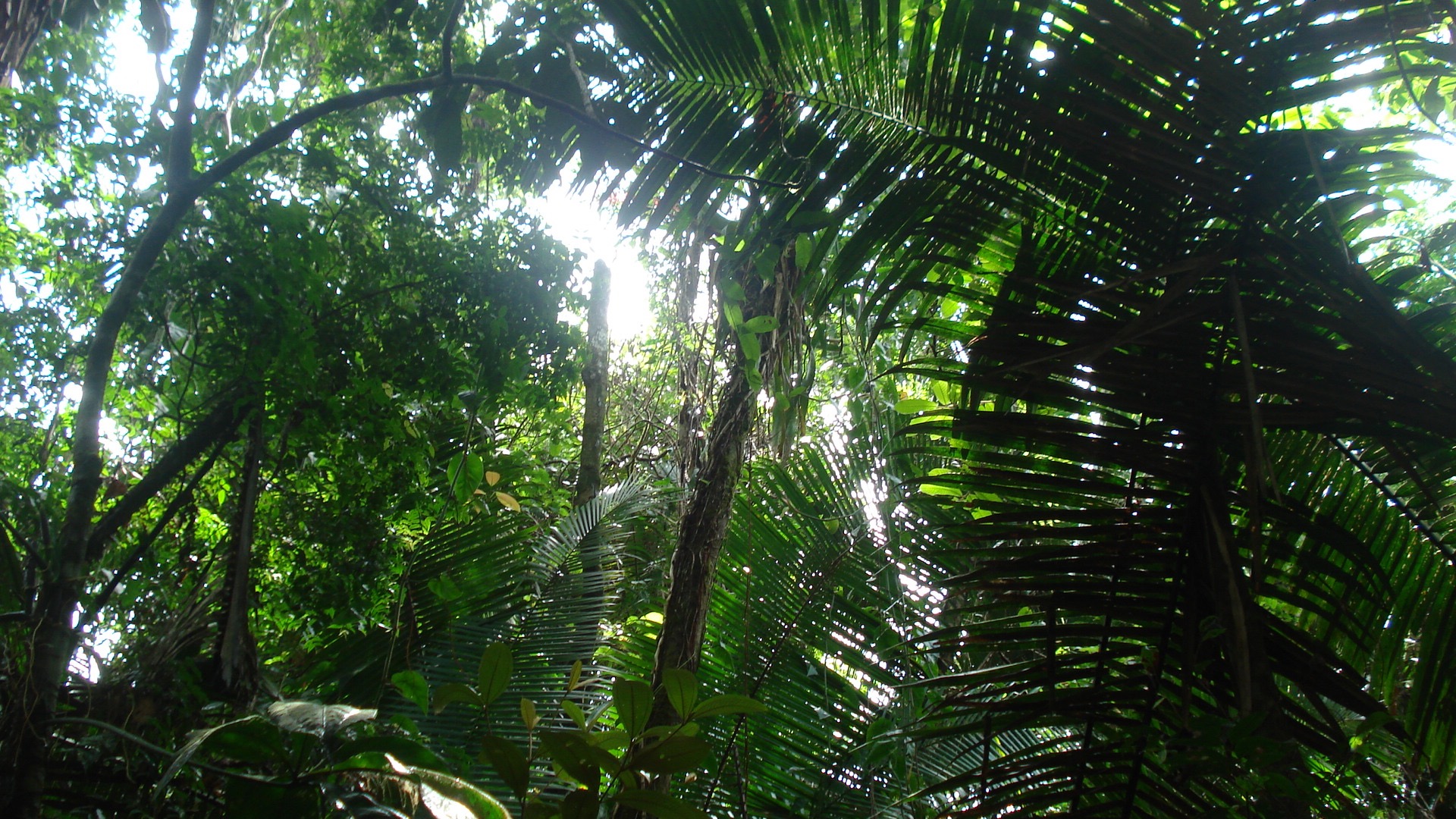
(Imagine being in these tree houses and walkways overhead.)
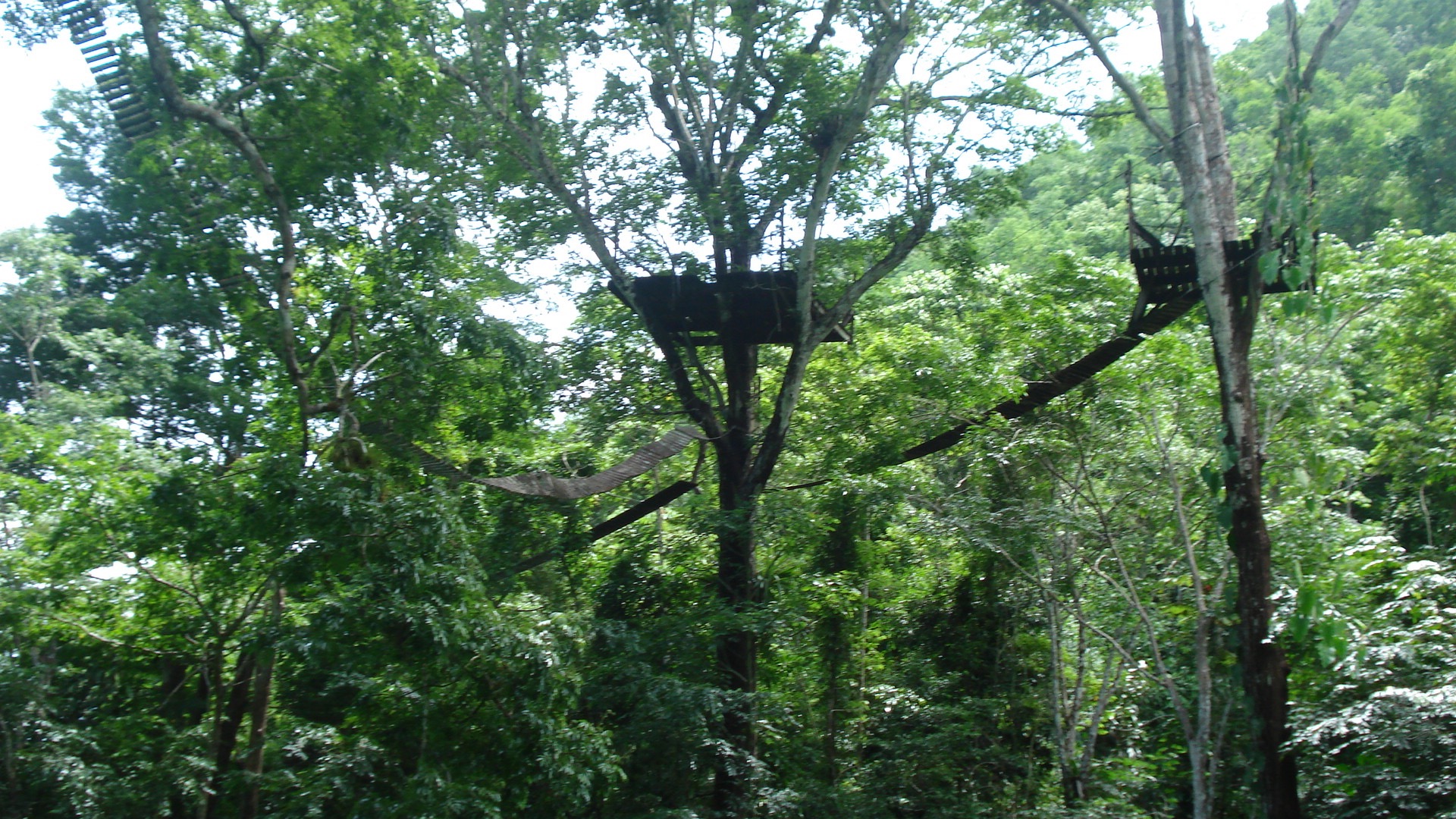
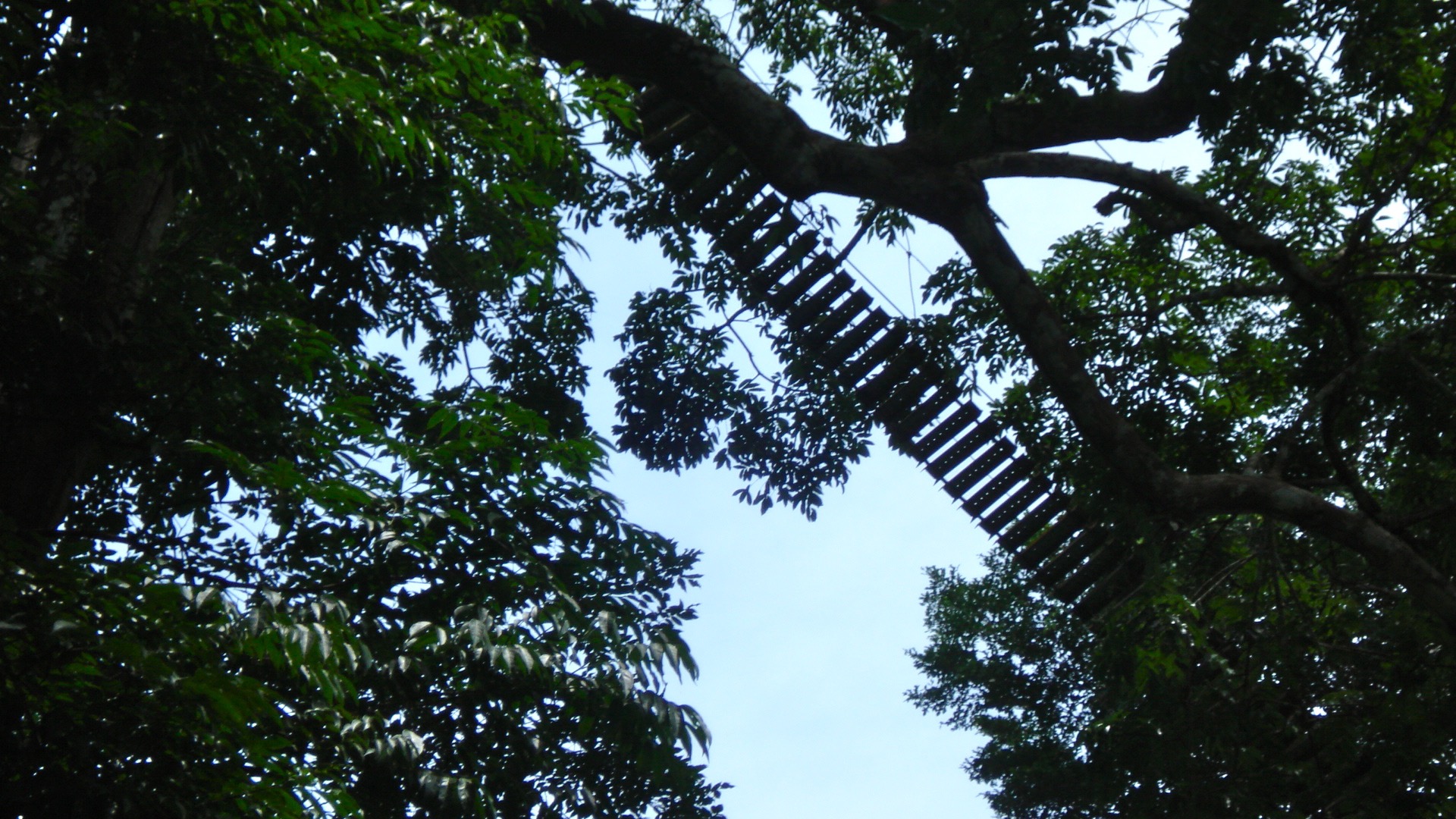
Our second excursion was to Monkey River. Our guide took us on a boat south of Placencia Peninsula across a mangrove bay in a biting rain storm and into the Monkey River. First, we stopped off at Monkey River Village, another poverty stricken, little community along the banks of the river. I don’t know if they had a road into the village; it was surrounded by a dense rain forest; but each house had a small motor boat next to it. We went to another “restaurant” and ordered our lunches for the way back. Again, we were eating in someone’s poor home. On the way back from the river, we again had rice and beans, tortillas, chicken and blackened fish, and again it tasted delicious.
In the rain, we took the boat up Monkey River observing the vegetation and wildlife. If you view the movie “Mosquito Coast,” which was filmed in Belize, you will know what our boat trip was like. Our guide pointed out the various birds and plants and their medicinal and nutritive uses. I learned that Royal palms and a few other varieties were native to the area but that the coconut palms were originally all imported. We saw several iguanas on tree branches, a crocodile, and, of course, numerous lizards and geckos. One lizard could walk on water (well, actually run across the water) and not surprisingly was called the Jesus Christ lizard. Up in the river, we headed for the bank and disembarked. We then walked through the wet jungle and waded through streams to track the loud howling and barking sounds we heard ahead of us. We came upon a troop of Howler monkeys (aptly named) up in the trees above us. Along the way we saw various small animals, large spiders, and crabs that lived in holes in the jungle floor that came out when the holes filled with water, which was the case on this day. John found a cute, little, green, tree frog with red eyes. We saw wild cacao trees and various medicinal plants.
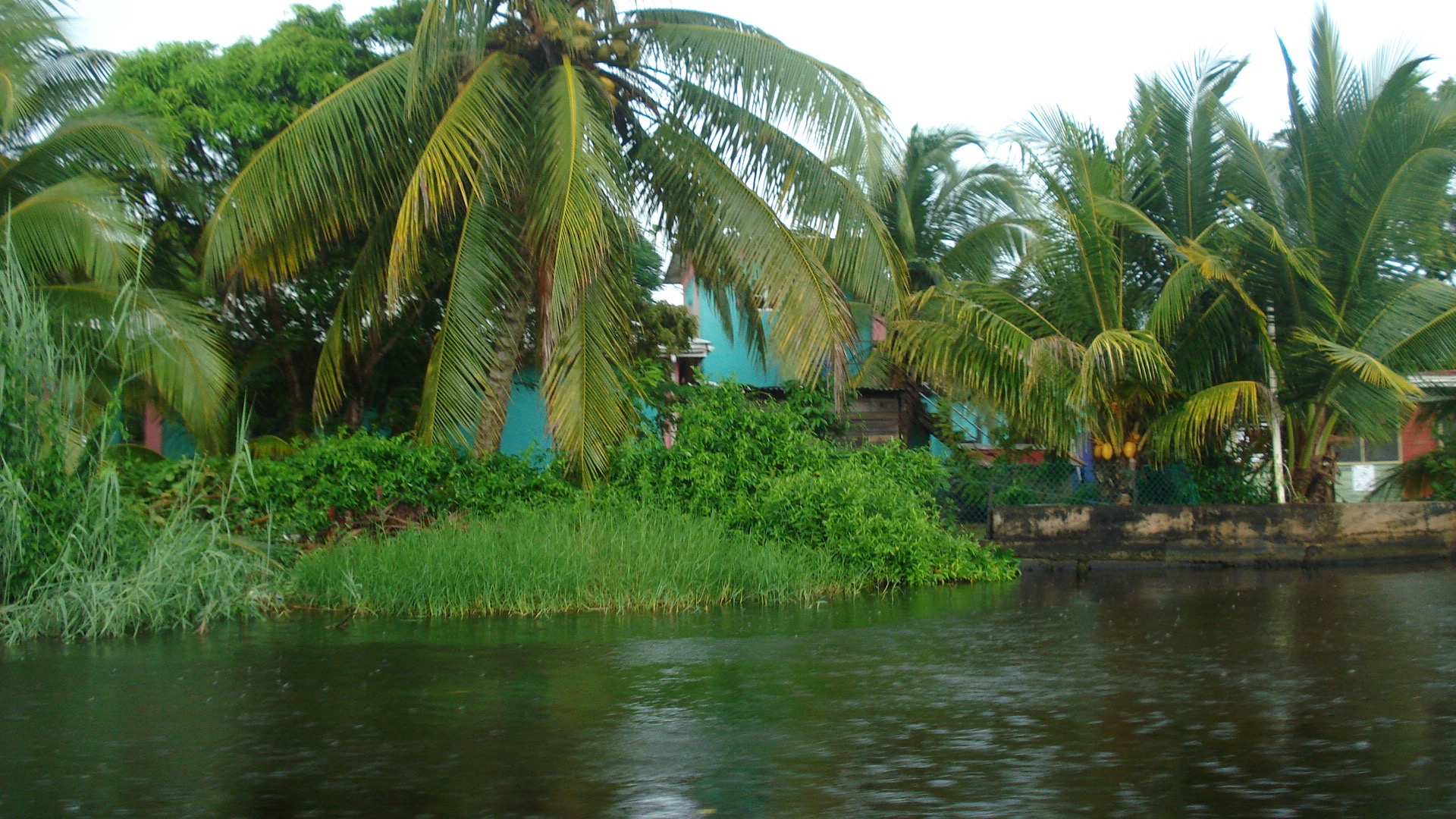
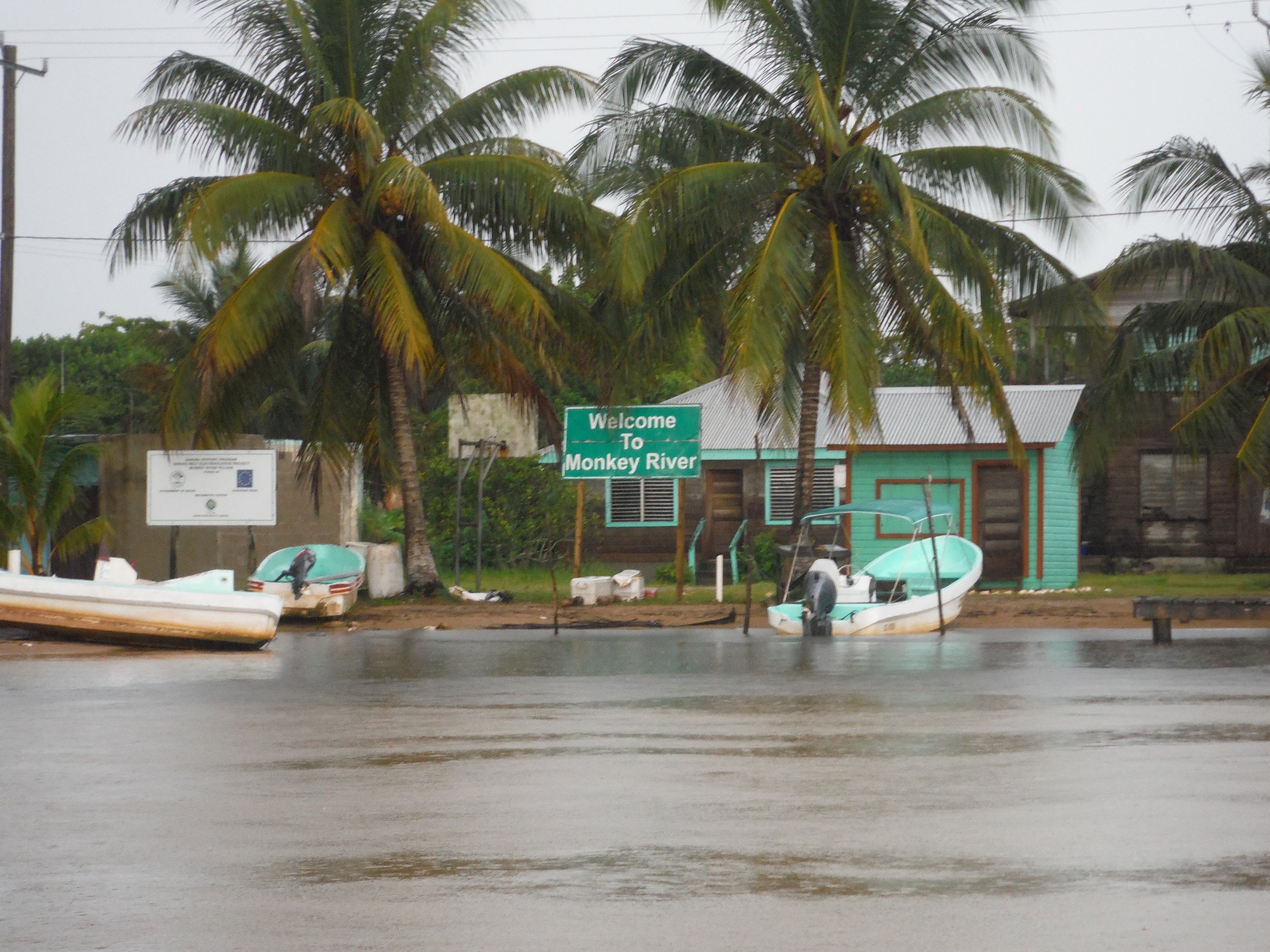
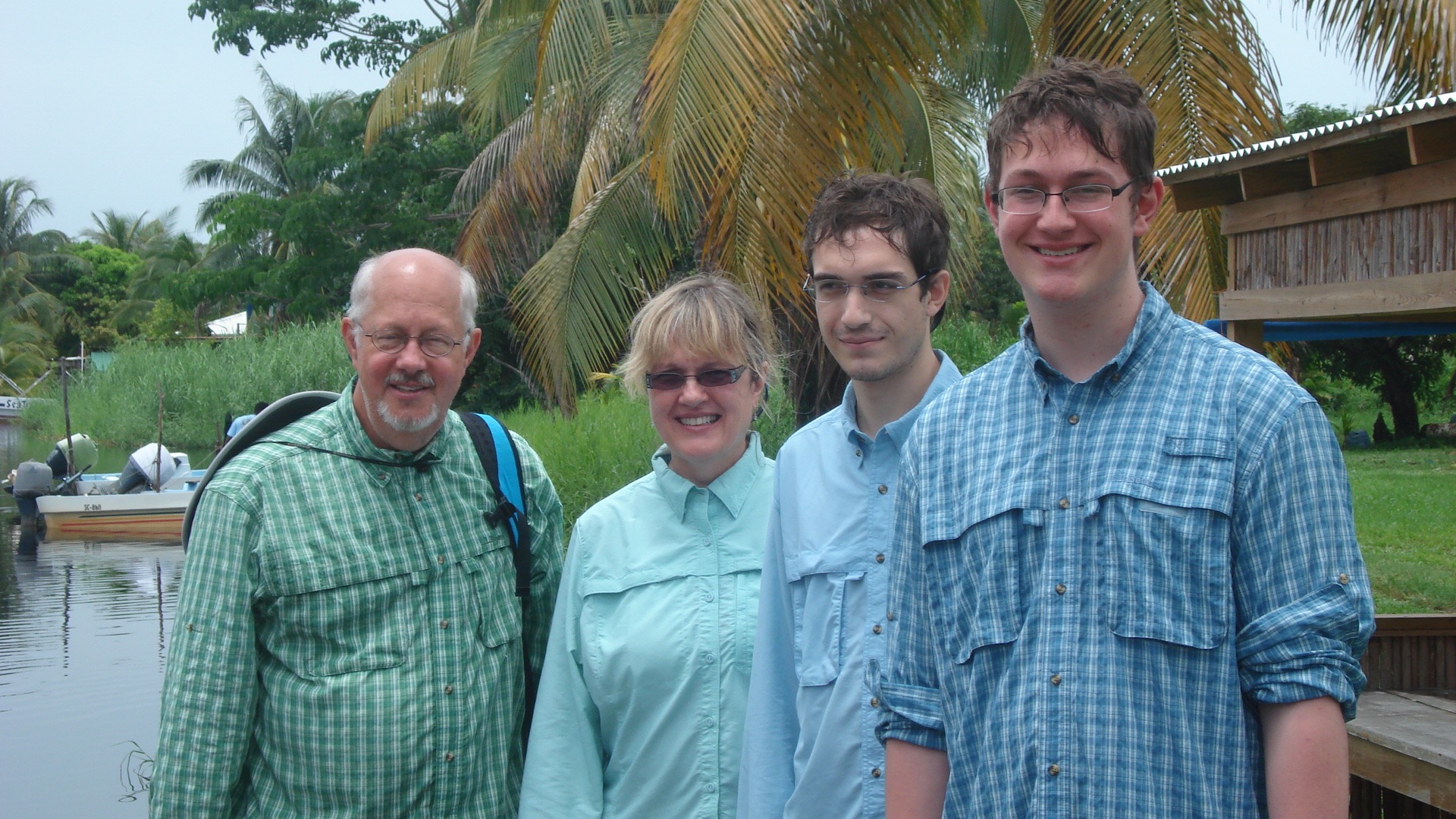
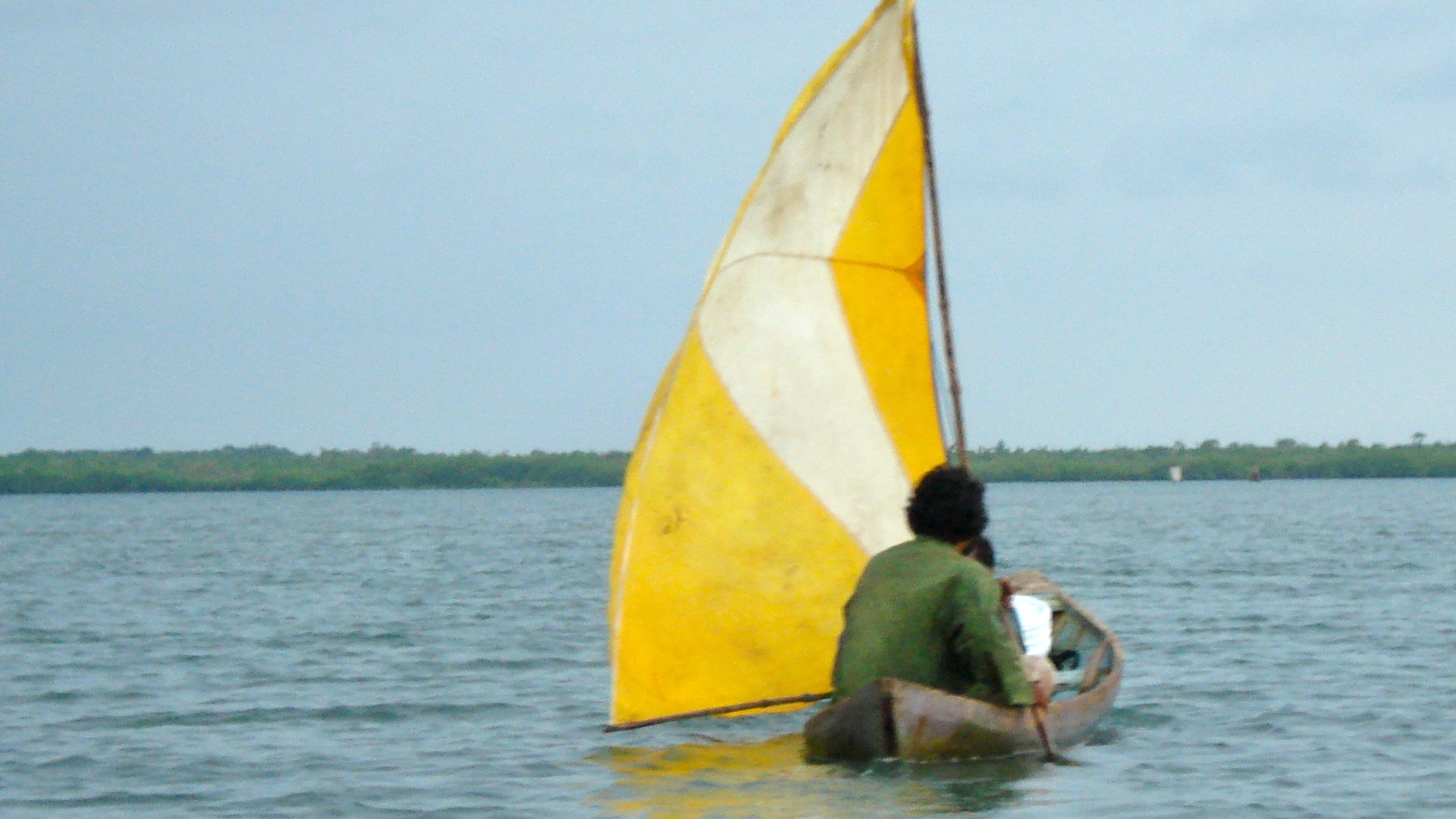
After leaving Monkey River, we found manatees in the mangrove bay and in the open ocean. They seemed to be curious and would come around our boat but would stick only their noses above water. Still it was a delight to be so close to such spectacular creatures.
At this point, you may be getting the idea that every excursion involved spending the day in water or being soaked through. Yes, that was indeed the case, but it was what it was; that was the nature of our excursions. As wonderful as all the excursions were, we all voted our third to be the best. We took a boat about 35 miles out into the Caribbean Sea to the largest barrier reef in the world next to the Great Barrier Reef off northern Australia. Several of us on the boat had snorkel gear—masks, snorkels, and fins—but most had scuba gear and were going diving. We ploughed through driving rain and heavy waves to get to our destination, but, remember, we had learned not to think about the weather. By the time we reached one of three small islands (mostly sand, with a few palm trees, and an outhouse) of the Silk Cayes, we were bathed in beautiful sunshine and a light breeze. The boat could not come too close to the Cay because of the shallow water; so the snorkelers with our two guides, jumped off with our gear and packs over our heads and waded to the island. The boat then left with the rest to go diving somewhere nearby. An entire civilization of delightful hermit crabs covered the island. They came in various sizes and had enough empty shells to provide them with additional mobile homes. We put on our gear and made our way out through the shallow water to the coral reef surrounding the cay. Once we got into the rhythm of our breathing and use of fins, we felt like we could have stayed out there forever viewing this underwater paradise. The views of the coral, plants, and myriad fish were colorful and clear in the turquoise blue water. We saw many varieties of fish, including several kinds of sharks, rays, a dolphin mother and child, various varieties of lobsters, puffer fish, sea cucumbers, and, most exciting, a couple of lion fish. In fourth grade, Ethan had done a school report about lion fish, with their beautiful spines and fins and their toxic poisonous tips. He drew them; he made models of them. So this was an especially exciting find for him. We admired them, but we kept our distance.
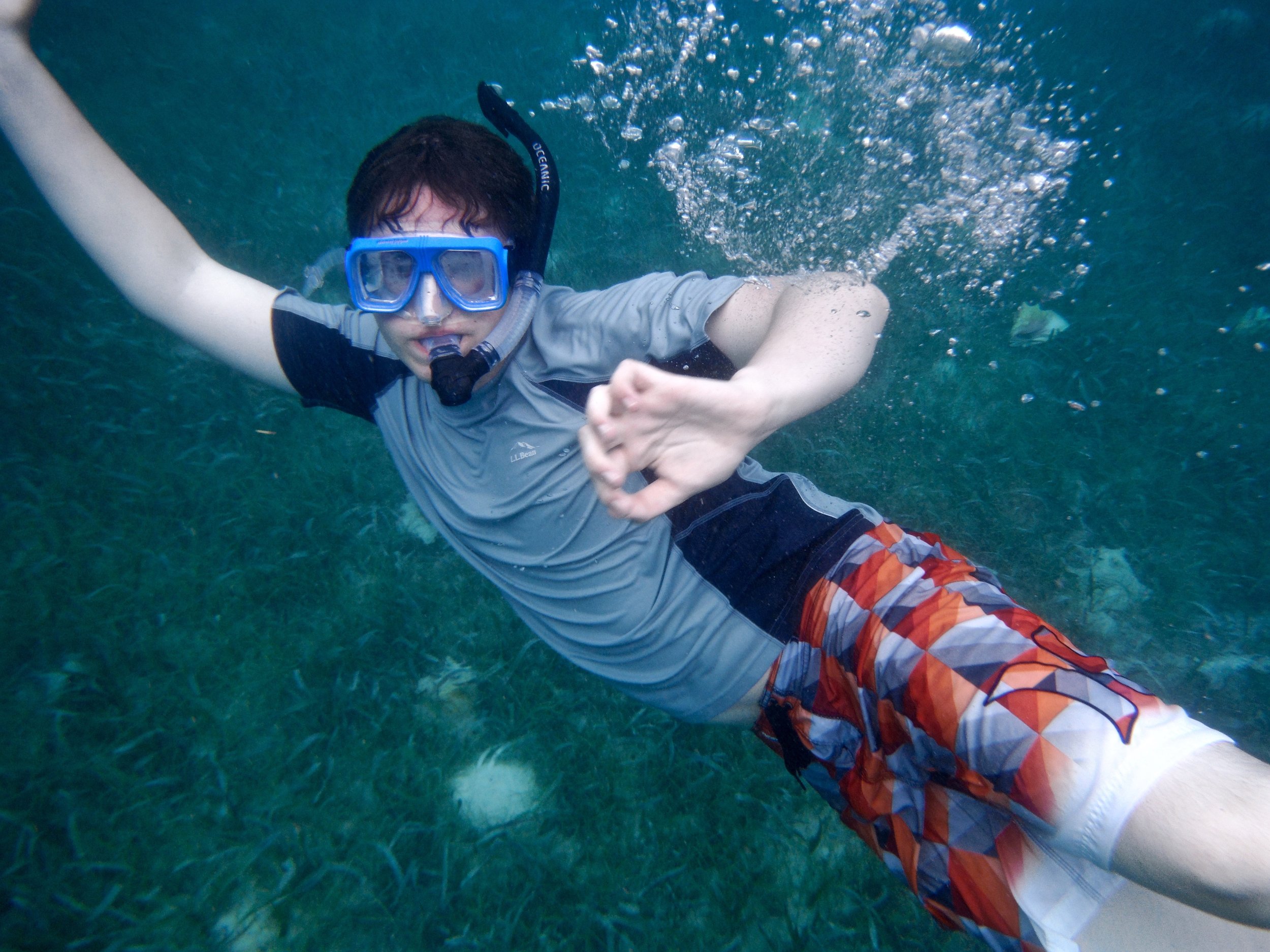
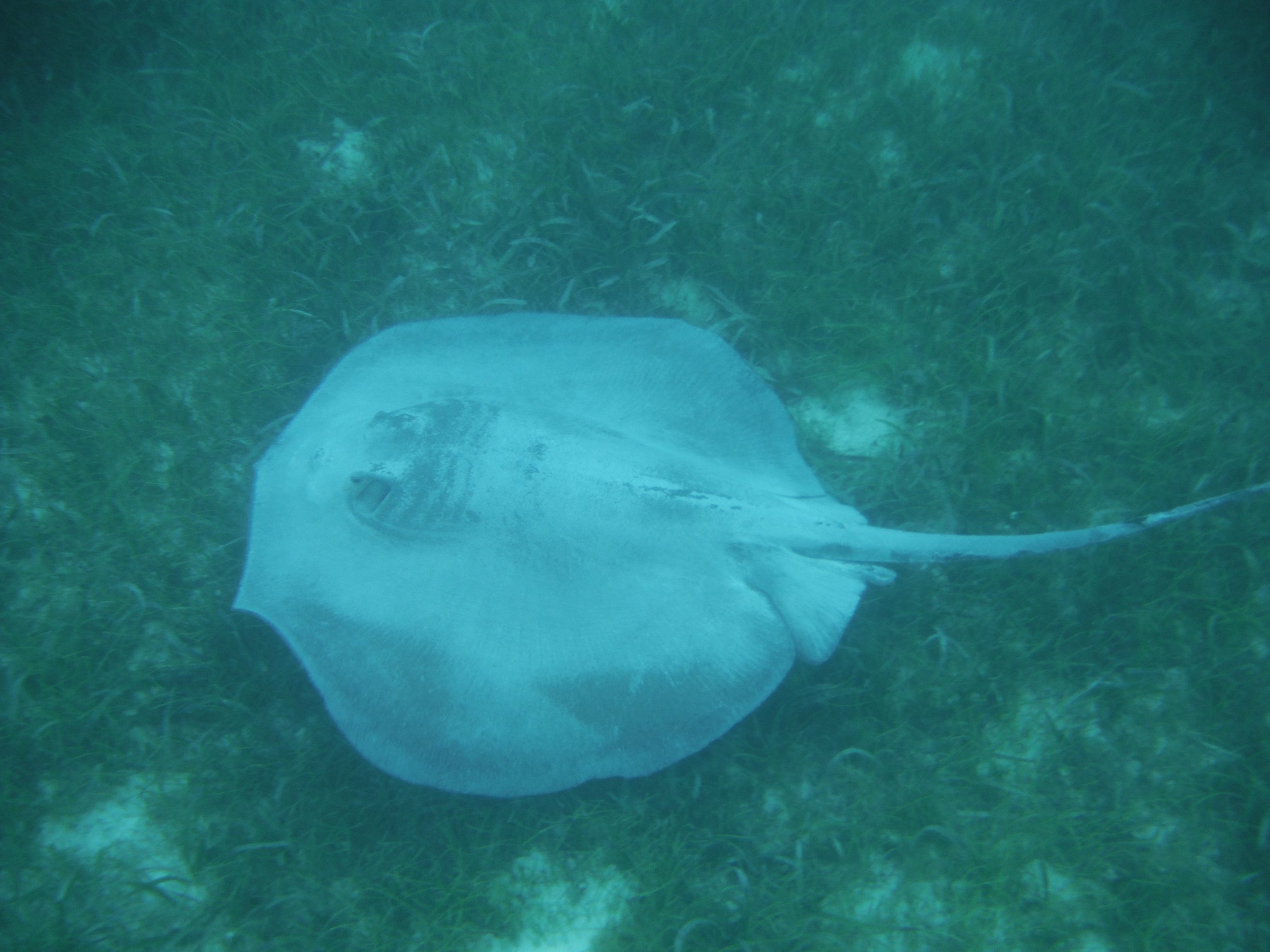
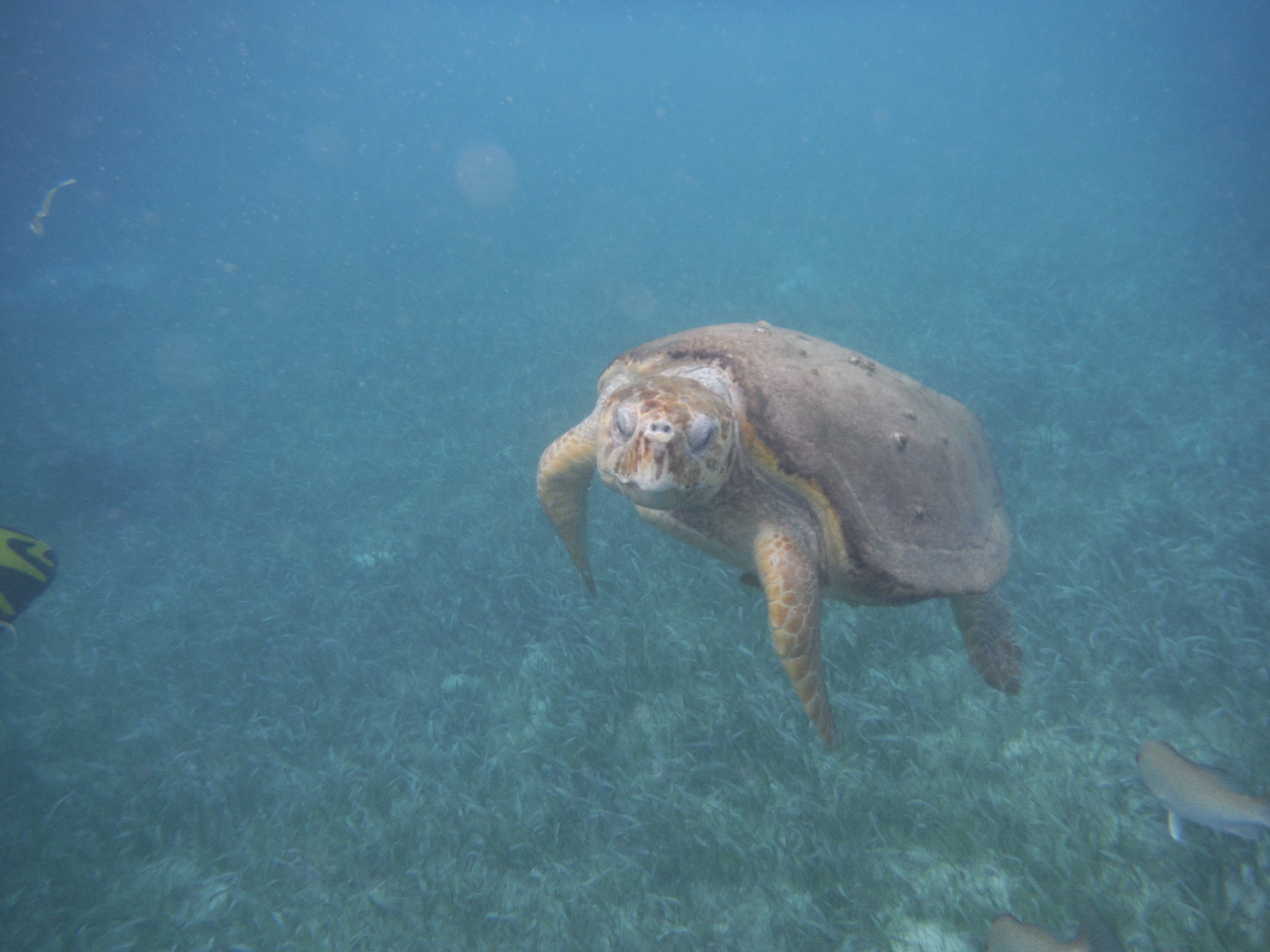
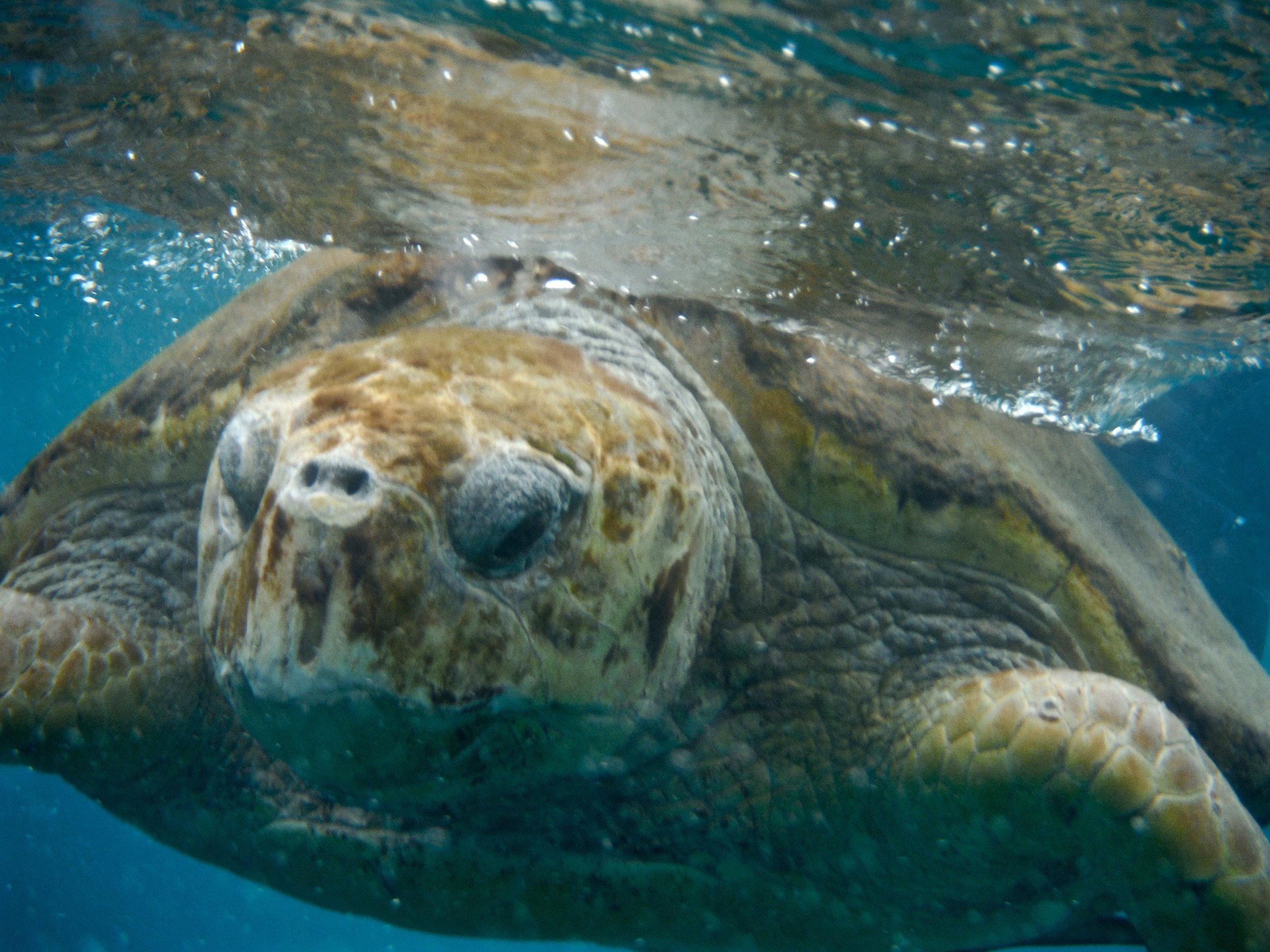
We then went back to the island when the boat returned with the divers. We all had a barbeque lunch on the island of, you guessed it, tortillas, chicken, fish, and rice and beans. After lunch, the divers went out again on another dive, and we, snorkelers, went in again, but this time we swam quite a ways from the island across some deeper water to a larger part of the barrier reef. Luckily we had a guide to get us there. This shallower part was even more spectacular, with its variety of fish and corals, especially fan corals. After this swim and the return of the divers and boat, we took the boat somewhere distant from any island but where the water was shallow again, and we all went snorkeling one last time, this time to find loggerhead turtles. After some time without finding any, Beth, Ethan, and I gave up and climbed back onto the boat and took off our gear. But wouldn’t you know it, just then a large loggerhead showed up (perhaps four feet in diameter). John was in his glory, and Ethan put on his gear and jumped back into the water. They must have spent 30 minutes swimming with the turtle (along with other snorkelers). From the boat, we could see the turtle clearly as well, as he stayed near the surface and came up for air quite often. With so many people around, I would have thought he would clear out, but he was obviously familiar with snorkelers and seemed to enjoy being with them. Maybe in times past, people had fed him. That was our delightful day at the reef.
Our fourth and final excursion was another trip inland to a mountainous rainforest at the Jaguar Preserve, a Belizean National Park. (Though there are apparently many jaguars in this area, they are shy and only come out at night; so we didn’t see any.) We passed myriad orange orchards and banana plantations, and, again, Mayan villages. We eventually entered the preserve and drove over rough red, clay roads to the park headquarters—with some restrooms and showers, a few bunk houses for rent, an information center, and the park ranger’s residence, all deep in a humid, hot jungle. We packed up for another hike up the trail. We saw gray foxes, one with a rat he had caught and was probably taking to his family, a snake, some birds somewhat like wild turkeys, and other small creatures.
Our guide this time was particularly knowledgeable about the plants we saw. We tried some wild fruit and beans that were sweet; we learned how women could eat (or more typically drink the tea) from the leaves of one plant that supposedly was highly effective as a birth control medicine but only needed to be taken every three months. We learned about medicines to reduce pain, to relieve swelling, to relieve insect bites, and of course some plants that could give one a “religious” experience. We learned about one plant that when chewed acted like Viagra, which, according to our guide was why his 104 year old father had 26 children. We also learned that the iguanas, during a mating season, often mate so often and so vociferously that they mate themselves to death. Hmm, do you think they had been eating some of the leaves of that natural Viagra medicine?
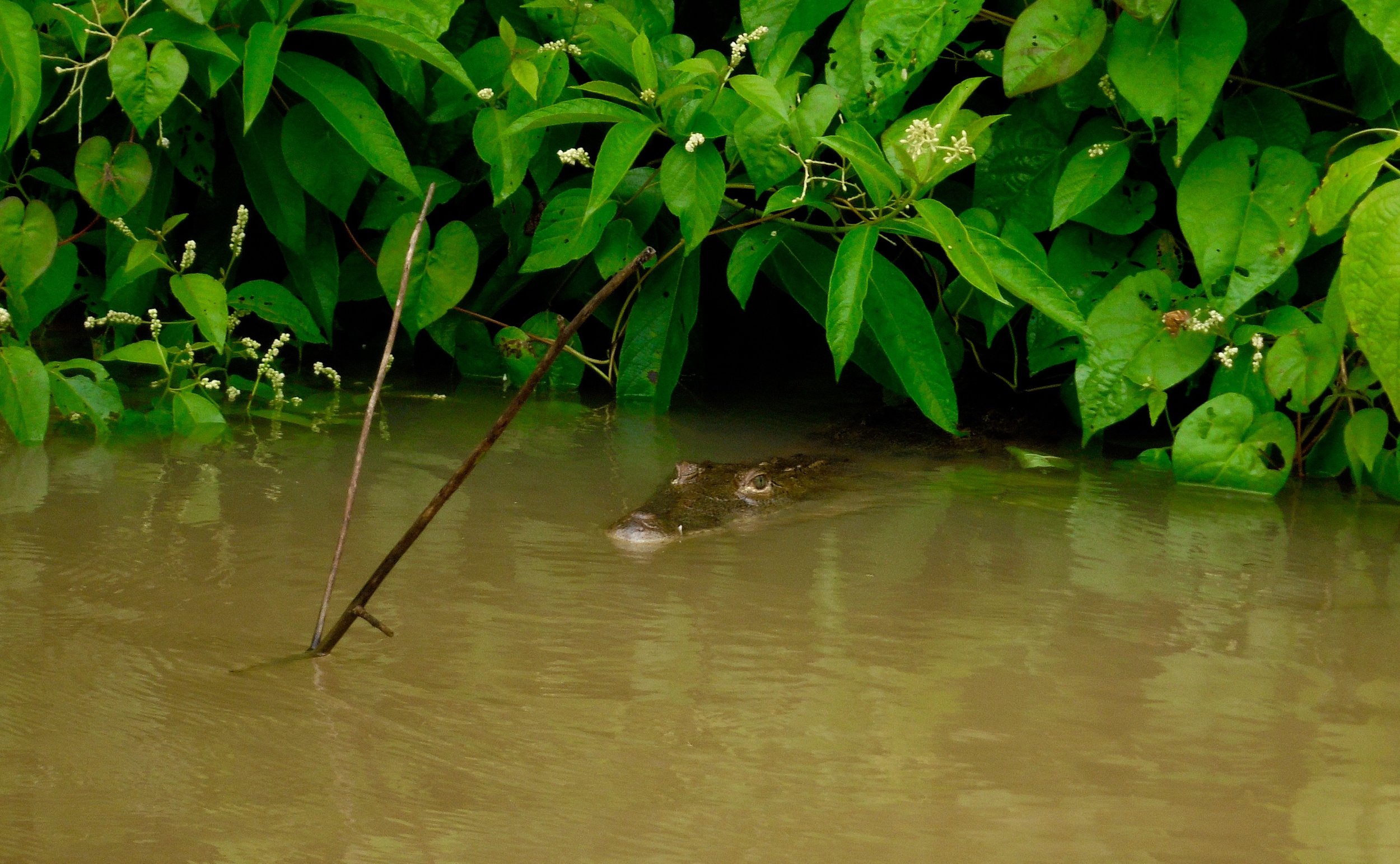

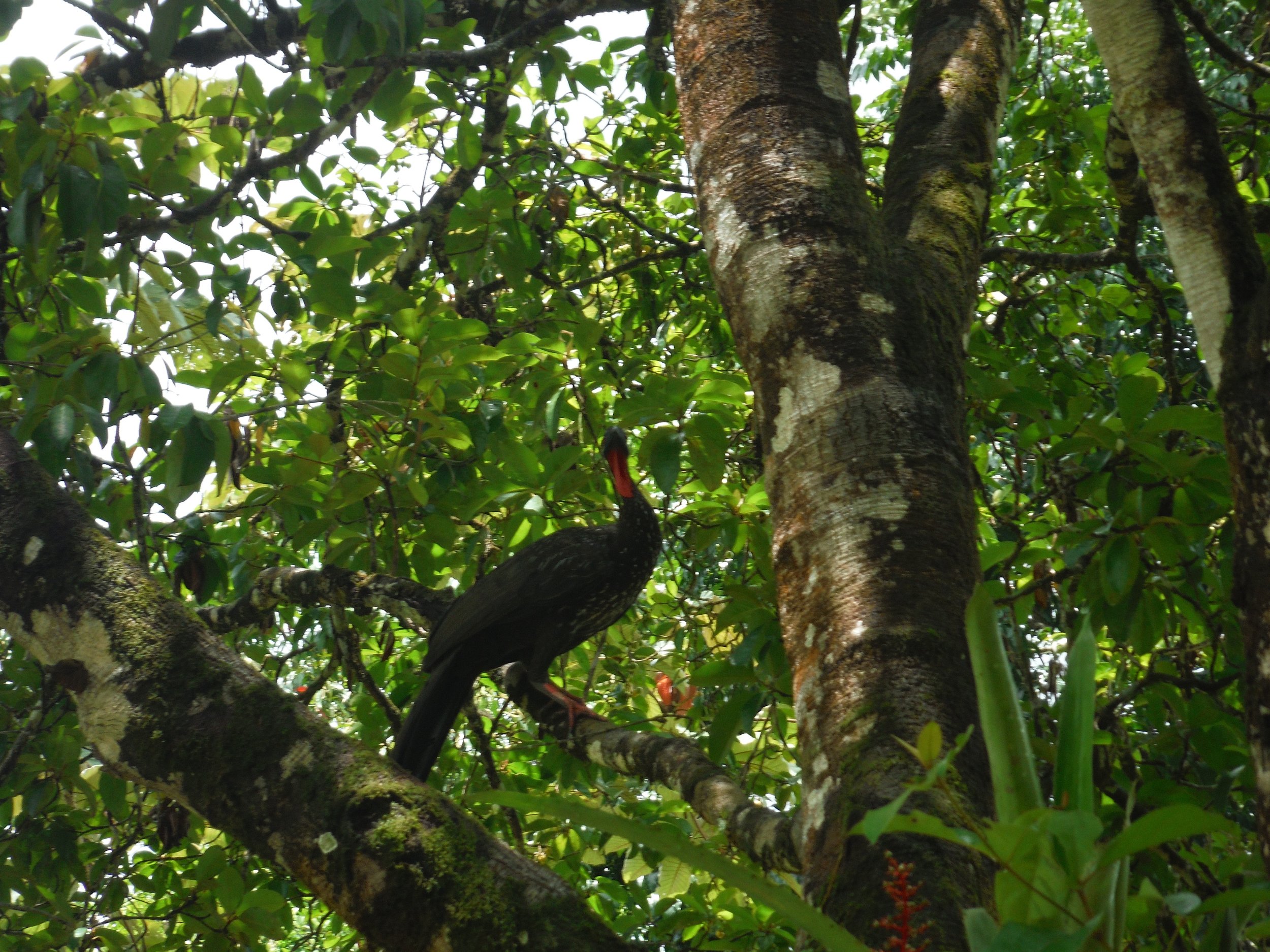
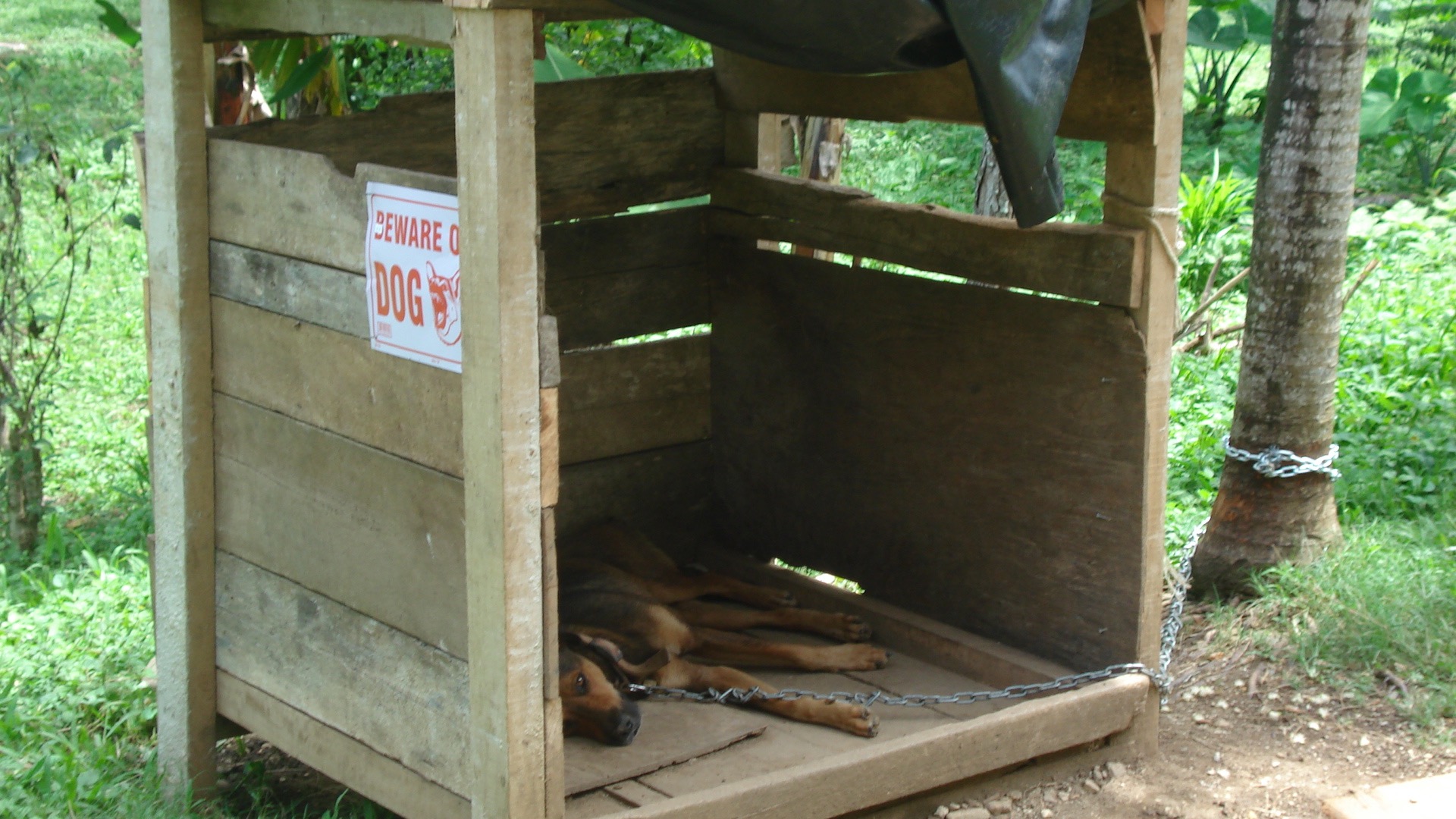
n our family, we discussed how many plants provide natural medicines and nutrients for good uses. Of course, researchers have tapped into many of these plants to produce modern medicines and herbal remedies, but there must be many more that could be researched, if people would go around the world to all cultures and take their natural medicines and then by doing controlled experiments into the actual effects, check out the claims. Why don’t we use more of these natural remedies? As John noted, one cannot patent a natural plant; so there is not much profit motive for drug companies to use natural and organic plant medicines that anyone could get or grow. Too bad.
I got to thinking about how people actually discovered the effects of all these plants. I realize that various cultures have had hundreds or even thousands of years of experience and the knowledge has often been passed on, but what kind of person just goes out into the jungle and willy-nilly eats the leaves or stems or roots of some random plant? A person would have to be either starving or a high sensation seeker or a little crazy. Maybe a community would identify the few people in the village who were a little crazy and sensation seeking and follow them around and watch what they would eat and then look for the results. Either nothing would happen or they would get better from some malady or be relieved of pain or get a high or they would get sick or die. Then the others would know what to do. But some crazy, adventurous ones would have to try things out. Actually, we have a good friend, Karl, who is a most wonderful person, but probably fits this category. At one point in his life he was into trying various natural plants. One time, he was out hiking in the wilderness of New Mexico and came upon a plant that he thought had some good qualities, so he ate it. It turned out to be hemlock and was deadly toxic. He went into a coma and paralysis, and medics had to fly in and evacuate him. He barely survived, and to this day he has amnesia for a major portion of his life before his experimentation with wild plants. Now, had Karl been born into a Mayan village, he would have been one of the people that others would have followed around to watch what happened to him. “Hey, there goes Karl again into the jungle. Let’s follow him and see if he eats that weird plant over there and see if his skin clears up, he gets a buzz or gets a boner or he dies.” Karl would have been a community treasure.
At the end of our hike through the jungle, we came upon a beautiful, blue-green pool fed by a waterfall. It looked inviting, and we were hot and sweaty and rain soaked. So many of us took off our jungle clothes (we always wore our bathing suits under our clothes) and jumped in for a refreshing swim and shower under the waterfall.
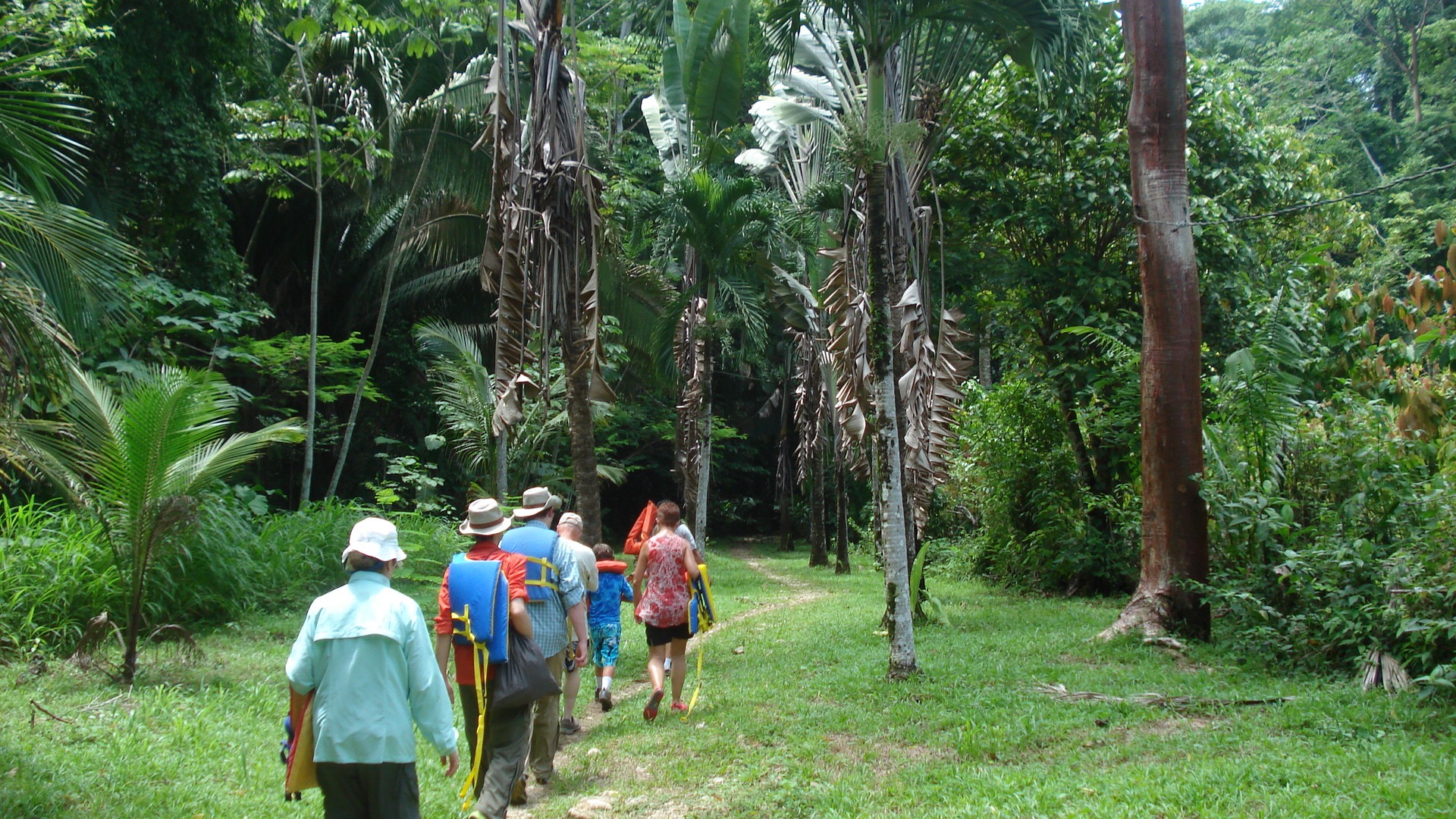
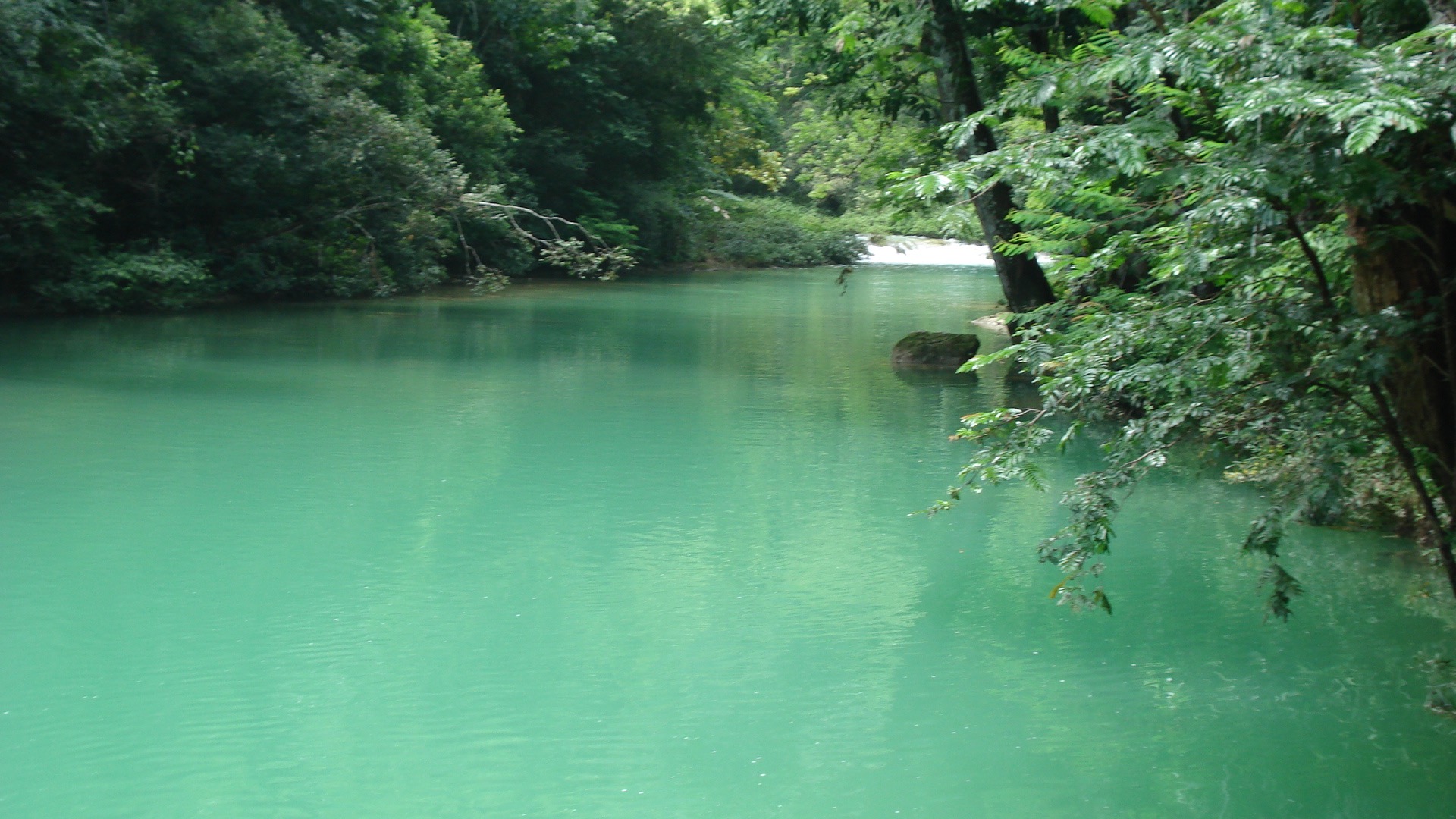
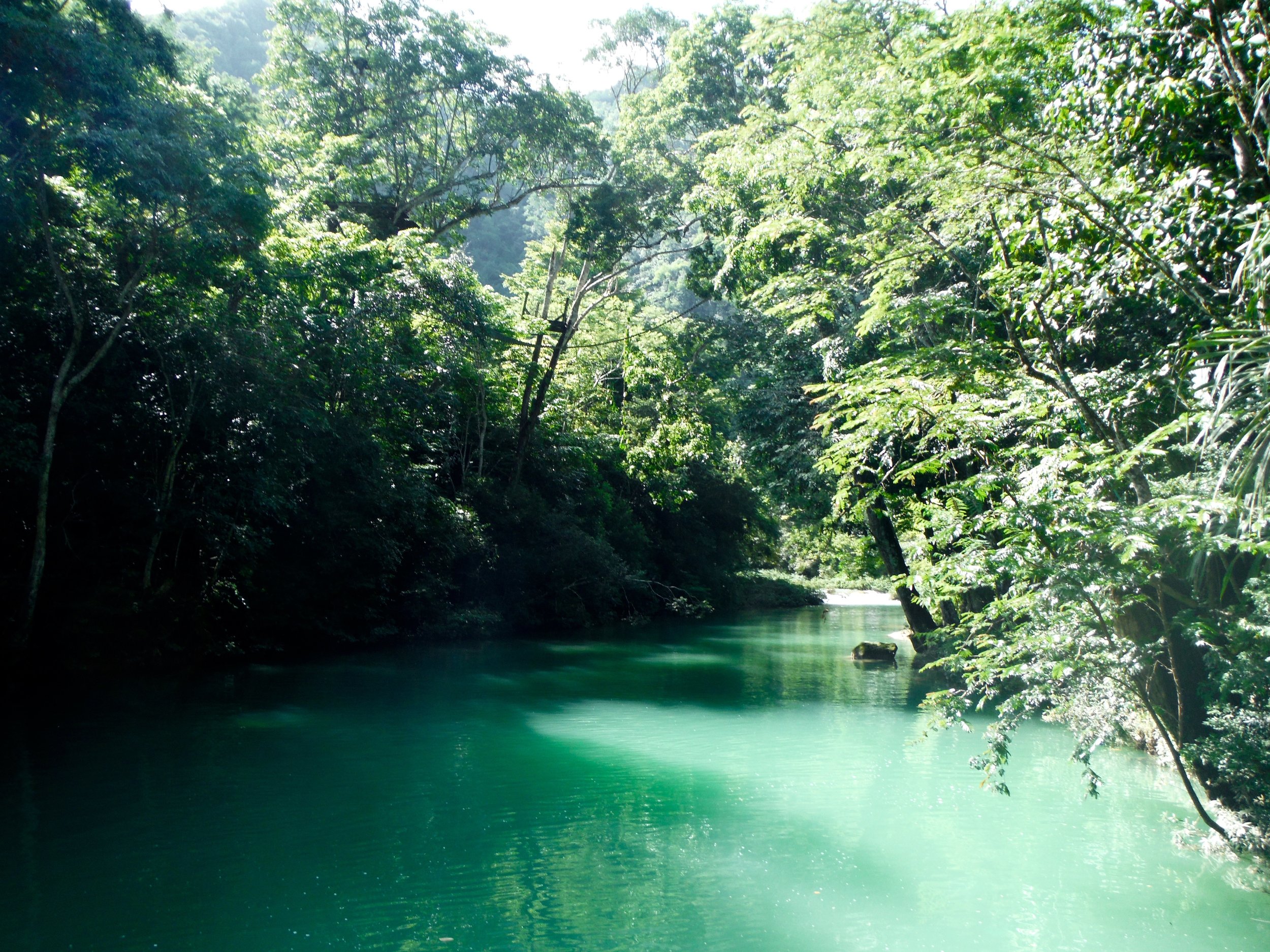
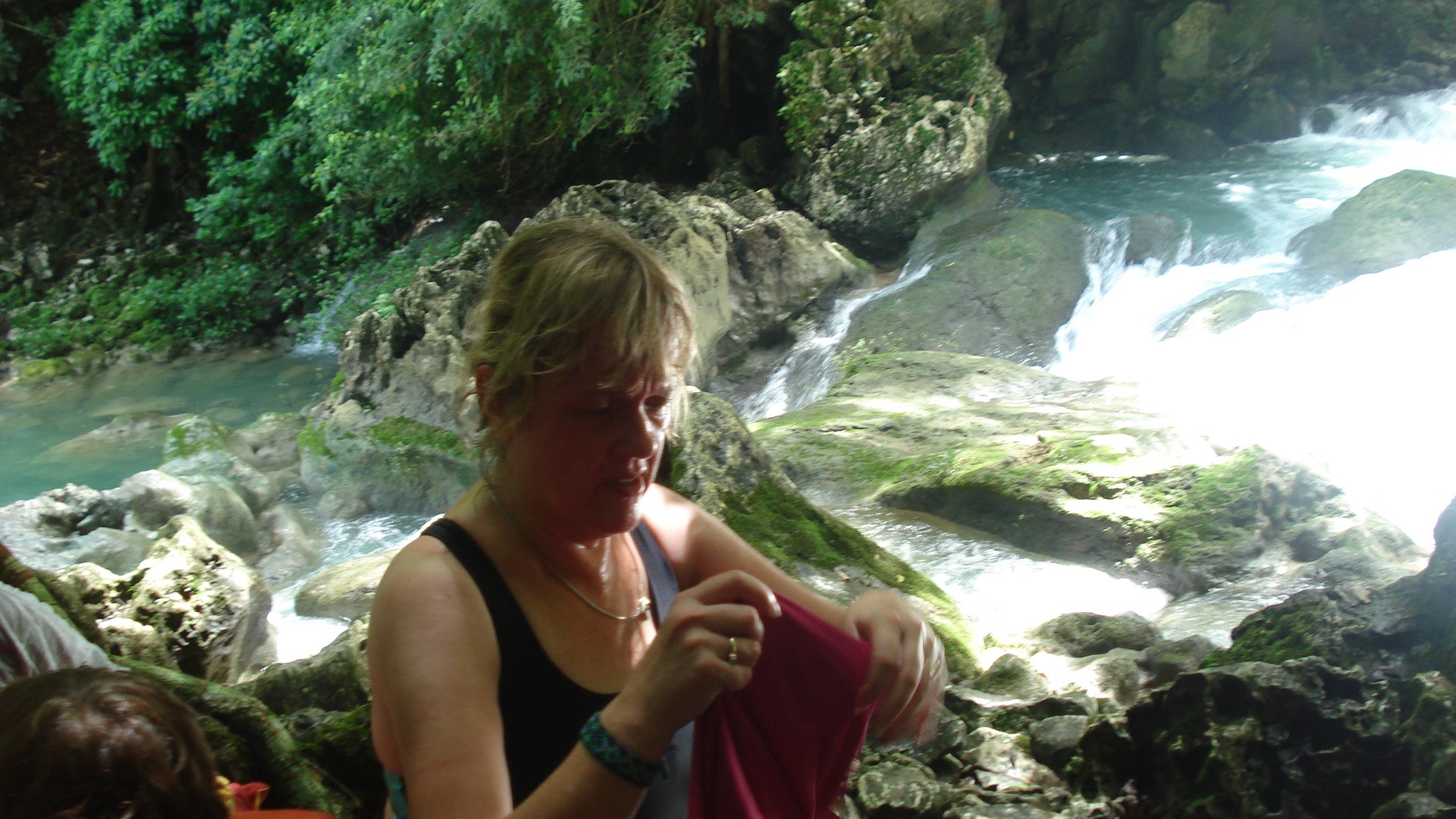
After lunch we picked up some inner tubes back at the ranger station and hiked down to another river and floated down it through the jungle, with palms and thick vegetation growing around us and above us over the river. It was mostly sunny, but of course, rained for part of our float down the river. Beth decided not to go tubing and stayed back at the ranger station and talked to several natives about their villages, their culture, the government, and their lives. She was happy as a clam.
Let me say something about what we learned about the Mayans and about the Belize people in general. The Mayans, of course, have been around this region for a long time and are descended from some ancient peoples. They are for the most part poverty stricken and without education. Maybe they are happy as they are, but saddened us to learni that even the public schools cost enough for transportation, uniforms, school supplies and other expenses that, though the expenses are minor by our standards, they are prohibitive of these children attending school. So many of them get no schooling at all. Mayans also seem to be low on the totem pole when it comes to the groups in control in the Belizean government, and so they suffer the most of all the various ethnic groups. There seems to be so much graft in the government and other controlling institutions that it is difficult to get money or supplies to the families that need it most. Some native Belizeans recommended not sending money through the government or even the school system because it will be siphoned off before it reaches its intended destination. We know of one family whose grandmother has lived in Guatemala for years working with individual families and children to help with their education. One of the sons in this family went on a project to Belize to help with medical assessments and to bring in medical supplies that could be placed directly in clinics where they were needed. Some people recommend bringing in extra school or medical supplies with one’s luggage and giving them directly to those who will use them. We want to look into any kind of organized effort in which school supplies and financial support might be funneled directly to families and their children without them being siphoned off for other uses or by other people.
Despite the disturbing problems in Belize, apparently the situation and poverty in Guatemala is even worse. And we learned that the Belizeans do not have a great love for the Guatemalans, who they claim come down from their side of the boarder into the mountains and rain forests in Belize and rob tourists, chop down their trees and use the natural resources. We feel we should now take some action to help at least some people in this part of the world.
The last full day we were in Belize, we decided to just sit around and relax; however, that isn’t in the nature of our family. While John and Ethan went kayaking in the ocean and then walked into Seine Bight to look for more chocolate, Beth and I rented a golf cart again and drove into Placencia to buy some hand made items from some of the Mayans selling their crafts and to talk to them. We also had some dynamite smoothies of fresh fruit. In the afternoon, Beth was lounging by the pool, overlooking the sea, and a young 6-year-old from Seine Bight snuck into the pool to swim. He kept bumping into her and obviously wanted to get her attention and strike up a conversation. He told her that he came over everyday for a swim in the pool at the resort and never got caught or into any trouble. Beth asked him if his parents were with him or knew where he was, and he wondered why she would even ask such a question. He did not attend school, loved his swims and neighborhood, had never heard of Boston or New England, and knew almost nothing about the United States or any other country for that matter. He mentioned wistfully how much he wished he could live in a house like at our resort. We wish that wonderful little boy had more than his great swims.
A mixed country indeed. We should help out. Would we return? Well, we spent most of our time on the trip back home thinking of the logistics of how we can go back soon to Belize. Spending money there for those folks and going into the ocean and into the jungle again seems like a good idea.


